
- Bucket List
- Year in Antarctica
- United Arab Emirates
- United States
- Country Comparisons
- Digital Nomad Cookbook
- Gifts & Gear
- Hike Your Home State
- Interesting Reads
- Long-Term Travel
- Travel Blogging
- WORKING ABROAD
Select Page

How to Visit Sacsayhuaman + the Surrounding Ruins
Posted by Di Minardi | Last updated Nov 6, 2022

This post contains affiliate links.
A visit to the Sacsayhuaman ruins is a must from Cusco and is a perfect short morning or afternoon trip.
Sacsayhuaman and its partner ruins of Qenko, Puka Pukara, and Tambomachay are the closest ruins to Cusco and easily accessible by taxi, bus, or even by foot from Plaza de Armas in Cusco’s city center.
If you want to check them out, this guide to visiting the Sacsayhuaman ruins covers everything you need to know, including:
- How to get from Cusco to Sacsayhuaman
How to get from Sacsayhuaman to Qenko, Puka Pukara, and Tambomachay
- How to return to Cusco by taxi or by bus
How much does it cost to visit Sacsayhuaman?
- What to see at the Sacsayhuaman ruins
- What to see at the Qenko ruins
- What to see at the Puka Pukara ruins
- What to see at the Tambomachay ruins
- How to discover an extra set of secret ruins outside of the main circuit
- And much more!
Sacsayhuaman boasts gorgeous views of the city from high on the surrounding mountains – a visit here is not something you’ll soon forget. So, add a self-guided tour of Sacsayhuaman to your Cusco itinerary with this guide!

The Sacsayhuaman ruins are your destination – this Sacsayhuaman guide will take you there!
How To Get to Sacsayhuaman by Taxi
There are two popular ways to get from Cusco to Sacsayhuaman
You can go by taxi, which is the fastest and easiest way to reach the Sacsayhuaman ruins from Cusco, or you can walk to Sacsayhuaman, which is the most budget friendly way to reach the ruins from Cusco.
I’ll tell you how to do both.
The easiest way to get to the Sacsayhuaman ruins from Cusco is to grab a taxi from the city center. The drive is only about 10 minutes and should cost about 10 soles / 3 usd.
Many taxi drivers will try to convince you to hit all four ruins at once with them for a set price of 40 or 50 soles / 13 to 16 usd which is a good choice for convenience alone. If you don’t think you have it in you to climb hundreds of stairs to walk from Cusco to Sacsayhuaman, then the taxi is the best way for you to reach the ruins.
If you’re in a group of three or four, transportation for this whole outing can be done for 5 usd or less per person.
If you don’t want to walk to Sacsayhuaman from Cusco but also don’t want to spend ~15 usd on the taxi, it’s possible to visit all four ruins for a cheaper price by using separate taxis for the short trips between each one.
All of ruins are situated along the main highway to Pisac so it’s easy to grab a new taxi each time you’re ready to go to the next one.

If these stairs don’t scare you, you might be ready to walk to Sacsayhuaman
How to Walk to Sacsayhuaman from Cusco
I prefer the most scenic route (ok, and to save money) so Dan and I decided to walk from Cusco to Sacsayhuaman, which takes about 30 minutes.
The climb up hundreds of stairs was tough (especially in high altitude) but the views were insane and it was nice to get a little exercise on the weekend as well.
So, how do you walk to Sacsayhuaman from Cusco? Just follow these steps:
- Start at Plaza de Armas
- Walk down the road that runs along the right side of the Cathedral
- Turn left on Choqechaka road
- Turn right on the Atoc’sekuchi staircase
- Climb the staircase until you reach the main road, where you will turn left
- Walk along the road for a few minutes and you’ll see the Cristo Blanco (Jesus) statue
- Turn left on the gravel road just past the Cristo Blanco statue
- Continue along the gravel road and through a field to the entrance to Sacsayhuaman.
You can also put Cristo Blanco as your destination in Google Maps and it’ll lead you straight there on the route listed above. Then, after you enjoy the view, walk along the gravel road behind it (which you’ll also see on Google Maps) to continue to Sacsayhuaman.
There is a lot to see and do in this area of Cusco so I also recommend visiting the Chacan Cave and Temple of the Moon that are right nearby with my handy step-by-step guide!

Snappin’ a selfie at the Cristo Blanco view point
These ruins are laid out in an easy-to-follow ‘circuit’ and the best order to visit them is:
- Saysayhuaman
- Puka Pukara
- Tambomachay
After visiting each ruin, you can go to the main road and wave down a taxi to take you to the next one.
A taxi from Sacsayhuaman to Qenko will cost about 5 soles/ $1.50 usd.
The taxi from Qenko to Puka Pukara will cost around 8 soles/ $2.25 usd more.
Then, from Puka Pukara you can walk to Tambomachay.
If you’re up for more adventure, you can rent a horse from vendors at the entrance to Sacsayhuaman to take you to the rest of the ruins as well.
How to get from the Sacsayhuaman Ruins to Cusco
If you follow the route from Sacsayhuaman to Qenko to Puka Pukara to Tambomachay, the last leg of your trip will be from the Tambomachay ruins back to Cusco.
The ruins are right on the main road between Cusco and Pisac so there are always taxis, buses, and colectivos (shared vans) passing by.
Wait on the side of the road and flag whatever passes by first.
A taxi will be the most expensive option so if you want to continue saving money, I recommend waiting for a colectivo, the second cheapest option, or the bus, which is the cheapest option at only 1 soles / .30 usd per person.

Sacsayhuaman entrance ticket – Dan and I bought the 10-day Boleto Turistico
The cost to visit the Sacsayhuaman ruins can be divided into two categories: the transportation cost, and the Sacsayhuaman entrance fee.
For transportation from Cusco to Sacsayhuaman and back we paid 15 soles / 4.50 usd total for two people (if you decide to take a taxi, this will go up).
The Sacsayhuaman admission price is a little more confusing because you need to buy the Boleto Turistico (tourist ticket). The Boleto Turistico is sold at the Sacsayhuaman entrance, but, Cusco is unique in that you can’t buy single entrance tickets to the surrounding ruins.
Instead, you have to buy the tourist ticket for one, two, or ten days. This tourist ticket then grants you entrance to multiple popular sites around Cusco, with Sacsayhuaman, Qenko, Puka Pukara, and Tambomachay among them.
The one-day partial Cusco Tourist Ticket with only entrances to Sacsayhuaman, Qenko, Puka Pukara, and Tambomachay costs 70 soles / 25 usd.
But if you’re planning to visit more sites in Cusco or the Sacred Valley, buying the two-day or even the ten-day tourist ticket might make more sense financially, so make sure to weigh your options and know which ticket you want before you go!

Another view of the Sacsayhuaman ruins
What to See at the Sacsayhuaman Ruins
Now you knnow how to get to Sacsayhuaman and how much it costs to see the four ruins, it’s time to dive into what you’ll see when you finally get there!
Sacsayhuaman is the first and largest of the four ruins. They are about 500 years old and were used as a fortress (due to thre strategic location on top of the hill) and had temples, storage, and more.
The Incan stone walls are massive and still well maintained, and you can wander through archways, see ceremonial altars, and much more. As a photographer, my favorite part of the Sacsayhuaman ruins was definitely the sweeping view of the city of Cusco laid out below my feet.
Plan to spend the most time at Sacsayhuaman because these are by far the largest ruins of the four on this route.

Qenko ruins and view of Cusco
What to See at the Qenko Ruins
Qenko is second on the list and the smallest of the four ruins. This is because it was built as a house and ceremonial site for an important Inca citizen.
The home is unique because it’s nestled into a large rock that you can still walk through today. Make sure you go all the way inside the ruins because you can still visit the cold and eerie ritual alter inside.

The Puka Pukara ruins
What to see at the Puka Pukara Ruins
Puka Pukara is the third ruin you’ll visit on your half-day trip to Sacsayhuaman.
This site was a military fortress, so its strategically located high above the Cusco valley.
Even though it’s small, Puka Pukara boasts beautiful panoramic views of the surrounding mountains and was my favorite of the four ruins.

Still-working Inca aquaducts at the Tambomacahy ruins
What to see at the Tambomachay Ruins
The final stop on your tour of the four ruins is Tambomachay.
These are set back from the road into a quiet mountainside retreat. The bubbling streams are one of the first things I noticed, and I quickly learned that Tambomachay is thought to have been built to worship the god of water.
Surprisingly, running water still flows through the aquaducts in this ancient and peaceful Incan ruin, which is pretty amazing!

Secret ruins near Qenko
How to visit the secret ruins on the Sacsayhuaman Circuit
If you haven’t had enough history in your day, visit this fifth bonus ruin on your day trip to Sacsayhuaman.
Just across the street from Qenko there’s another set of ruins hidden in the trees that are completely free to access.
After a quick walk through the forest, you’ll find a quiet but imposing ruin that makes a perfect place to enjoy a picnic away from the crowds.

Inside the Sacsayhuaman ruins
What to Pack for the Sacsayhuaman Day Trip from Cusco
If you decide to walk to the ruins from Cusco I recommend wearing sturdy hiking boots and bringing a small day pack with:
- Water bottles
- Sunscreen and sunglasses
- Cash for the entrance tickets
Visit the Sacsayhuaman Ruins With This Complete Guide
Visiting Sacsayhuaman, Qenko, Puka Pukara, and Tambomachay is an interesting and beautiful half day trip from Cusco.
Whether you decide to take a taxi to the ruins or hike to Sacsayhuaman, they’re easy and convenient to reach from the Cusco city center and should definitely be added to your Peru itinerary.
This city is an unforgettable vacation destination because it’s so full of Incan history. Of course, you can take a tour into the Sacred Valley or climb Machu Picchu to see amazing ruins, but there are also so many little pieces of the Incan puzzle right here in Cusco’s backyard just waiting to be explored.
Now, you can use this guide to walk from Cusco to Sacsayhuaman and see them all!
Ready to go?
Explore unique stays on Airbnb – like these crazy sky lodges on a side of a cliff in the Sacred Valley or this tiny home in the Cusco hills – and the top-rated hotels on Booking.com to plan the perfect night, weekend, or long-term stay in the city.
Then, check out the top food, nature, and cultural experiences on Airbnb to round out your itinerary (or, book a best of Peru tour with Intrepid to finish your travel planning in once click!).
This article is part of the Cusco Hiking series. Read the rest below:
How to Hike to Huchuy Qosqo Without a Guide
6 Different Ways to Get to Machu Picchu from Cusco
The Salkantay Trek to Machu Picchu: Everything You Need to Know
How to Visit Mount Vinicunca – Peru’s Rainbow Mountain
How to Visit Chacan Cave and the Temple of the Moon
How to Visit Tipon and Piquillacta on a Half-Day Trip from Cusco
Then, explore the complete Peru series for more tips on what to see, do, eat, drink, and discover in Cusco and beyond.
Like it? Pin it!

Did you know every time you read an article on Slight North, you're also planting trees for the monarchs in Mexico? Start here to learn more about our mission and how to get the most out of the site!
Loved the ruins, but the megalithic construction I doubt is Incan. Probably Atlantian.
I didn’t do a tour so I don’t really know too much about them. Why do you think that?
Related Posts

The Complete Guide to Craft Beer in Lviv, Ukraine
Last updated Nov 6, 2022

Everything You Need to Know About the Belgrade Beer Fest

Where to Drink Craft Beer in Medellin

How to Visit the Cholula Pyramid in Cholula, Mexico
Let’s connect.
Recent Posts
- 2020 Year in Review: the Good, the Bad, and the Ugly
- Best Places to Go Hiking in Las Cruces, New Mexico
- Why You NEED to Celebrate Small Christmas in 2020
- 7 Best Restaurants in West Hollywood (From a Local)
- The Complete Guide to Craft Beer in Las Cruces

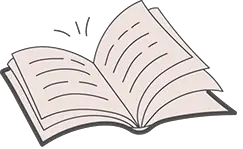
Our Adventure Journal
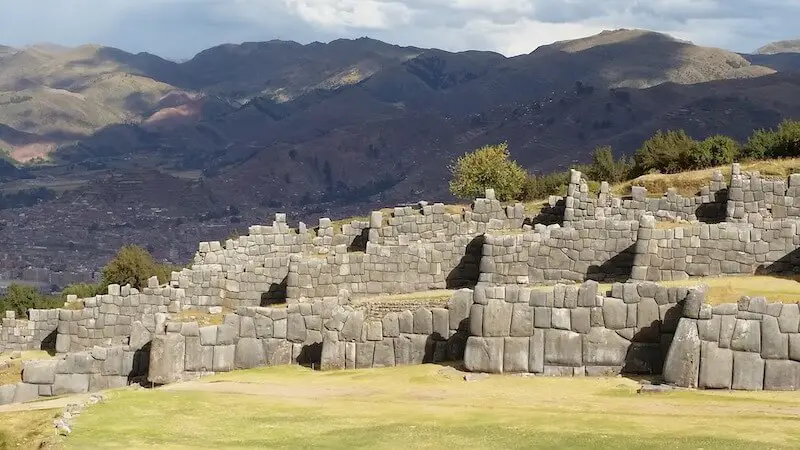
Visiting the Inca Ruins of Sacsayhuaman in Peru (Full Guide!)
Last Updated on April 8, 2024 by Kelly
If you’re planning a trip to visit Machu Picchu, you’ll undoubtedly spend time in the city of Cusco. Cusco was once the capital of the Inca empire, and it contains some of the most notable Inca ruins in Peru. Located high on a hill overlooking Cusco, Sacsayhuaman is one of the most famous Inca archaeological sites in the area. Sacsayhuaman is an Inca complex that was built during the 15th century. Much like Machu Picchu, it contains a citadel and religious sites. It also served as a military fortress.
We spent a full day exploring Sacsayhuaman, and we’re excited to share our photos and tips. In this post, we’ll share a complete guide for visiting Sacsayhuaman in Cusco, Peru .
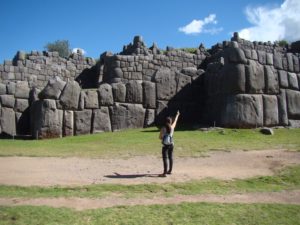
How to Get to There
It’s very easy to reach Sacsayhuaman while in Cusco. The ruins are located to the north on the outskirts of town.
There are two primary options for reaching the ruins from downtown Cusco. You can walk to the ruins , or you can take a taxi .
When we visited Sacsayhuaman, we chose to walk to the ruins. The walk was a bit uphill, but it was manageable even though we were still adjusting to the altitude. We thought it was a great warm-up for our upcoming hike on the Inca Trail !
Walking Route to Sacsayhuaman
From the northeast corner of the Plaza de Armas, walk north until you reach Suecia street. Take a right on Waynapata, and then an almost immediate left on Resbalosa. Then, take a right on Don Bosco. Continue up the hill and you will see the entrance to Sacsayhuaman. The walk is about half a mile long (750 meters) and should take about 30 minutes. (Maybe a little longer if you stop to rest as you make your way up the hill.)
We recommend taking this route because the Mirador de Plaza San Cristobal is along the way. You’ll also get to see the San Cristobal church which is quite beautiful. You can stop at this lookout for a beautiful view of the city and the Plaza de Armas!
Once you make your way through the entrance, you’ll do more walking as you explore the ruins.
Taking a Taxi to Sacsayhuaman
You can easily arrange a taxi to take you to Sacsayhuaman. You can ask your hotel’s front desk staff to call a taxi for you, or you can find one near the Plaza de Armas. You can always walk back to town after your visit (way easier going downhill!), or you can hire a taxi from the site’s exit.
About Sacsayhuaman
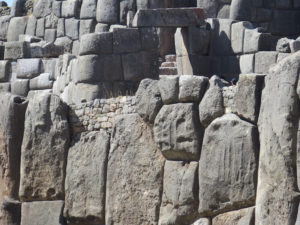
Sacsayhuaman has been a UNESCO World Heritage Site since 1983. You’ll find many spellings of the site around town and online. Other spellings of the ruins include Saksaywaman, Saqsawaman, and Saqsayhuman. The name on the entrance is spelled Saqsaywaman, but over the years, Sacsayhuaman is the most common spelling. (So don’t get confused if you see multiple spellings while you’re visiting… they all refer to the same place!)
The name Sacsayhuaman roughly translates to “Satisfied Falcon” in the Quechua language. Similar reported translations are “Royal Eagle” and “Place Where the Hawk is Satiated.”
Sacsayhuaman was built in the 15th century under emperor Pachacuti.
Although Machu Picchu is the most famous Inca archaeological site, Sacsayhuaman is technically the largest structure built by the Inca . (It deserves more credit!)
Some of the archeological work at Sacsayhuaman has found structures from the Killke people, which pre-date the Inca. It’s unclear what the Killke used the site for, but it’s clearly held significance to the indigenous people for hundreds of years. Evidence shows that the indigenous people inhabited the area since 900 AD.
The Inca constructed the city of Cusco to resemble the shape of puma from an aerial view. If that’s the case, then Sacsayhuaman represented the head of the puma .
What to See
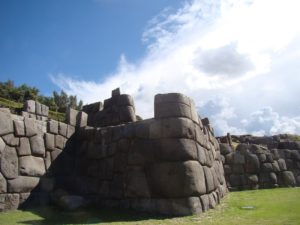
The ruins of Sacsayhuaman consist of several structures. The site is huge, covering more than 3,000 hectares.
Sacsayhuaman is divided into three primary areas: the walled fortress, the parade ground, and the Rodadero (site of religious ceremonies).
The most striking aspect of Sacsayhuaman are the walls that surround the complex. The walls were built from giant boulders that were carefully shaped to interlock with each other. (More about the construction of Sacsayhuaman later!)
The walls consist of 3 tiers that were built in a zigzag pattern. It’s believed that these walls represent the teeth of the puma.
One of the main highlights is a large plaza that was used for ceremonies. To this day, the festival of Inti Raymi is celebrated at Sacsayhuaman.
Sacsayhuaman also contains lots of temples , the most famous of which is dedicated to the Sun God Inti.
There are also remnants of three towers : Muyuccmarca, Paucarmarca, and Sallaqmarca. Unfortunately, the towers are no longer standing after the Spanish removed many of the stones to construct their own buildings. However, you can see the foundations for the towers.
Sacsayhuaman also contains a series of aqueducts, which ensured fresh water to its inhabitants.
How it Was Built
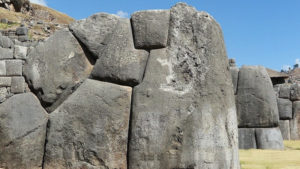
Construction for Sacsayhuaman began under emperor Pachacuti in the 15th century. It took 20,000 people between 60 to 90 years to finish it.
The construction of Sacsayhuaman is an engineering marvel considering that the Inca people did not use the wheel to transport the large boulders. Some of the largest boulders at Sacsayhuaman weigh anywhere between 100 and 200 tonnes.
The Inca didn’t have the use of iron or steel to cut the stones. The stones were cut precisely so that they could fit together without the use of mortar. The stones were also positioned to interlock with each other so that they could withstand earthquakes. Even 500 years later, the walls still stand.
Visiting Information
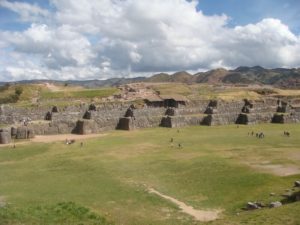
You’ll need to purchase tickets to enter Sacsayhuaman. The entrance to Sacsayhuaman is included in the Boleto Turistico (General Tourist Ticket). If you purchase the tourist ticket, you’ll be able to see multiple sites during the course of 10 days.
At the time of this writing, it costs 130 soles to purchase the full tourist ticket to enter Sacsayhuaman. The hours of operation are from 7am to 5:30pm. Be sure to check operating hours prior to planning your own visit.
Disclosure: This post may contain affiliate links. As an Amazon Associate, I may earn commissions from qualifying purchases.
Tips for Visiting
- Be mindful of the altitude : If you just recently arrived in Cusco, it’ll take time for your body to adjust to the altitude. We definitely took our time exploring the ruins and stopped often to rest.
- Bring water : Keep yourself hydrated as you explore. The ruins of Sacsayhuaman are unshaded and it can get pretty hot in direct sunlight.
- Make sure your phone is fully charged and download offline maps : You’ll want to use your phone for navigation and photos. It helps to download offline maps ahead of time so that you can use your phone for navigation even if you don’t have cell service or WiFi.
- Bring soles with you : Make sure that you bring small change in the local currency (soles). If you want to purchase snacks or souvenirs along the way, many businesses only accept soles.
- Save time for Cristo Blanco : The Cristo Blanco statue isn’t far from Sacsayhuaman. It’s only about a 10-15 minute walk. Save a little time at the end of your visit to see the statue up close, as well as the view of Cusco!
Tours of Sacsayhuaman
There are several tour options that you can book ahead of time to really get the most out of your experience to Sacsayhuaman. We didn’t book a tour, and we really regretted it! We don’t often book tours, but this is one place where it would have been really helpful to have a guide. Whereas we just wandered around the ruins admiring the stones, a guide would be able to tell you the details about each part of the fortress, as well as its cultural and historical significance.
- Full-Day Tour of Cusco, Puka Pukara, Tambomachay, and Sacsayhuaman : This full-day tour will take you to the aforementioned sites, as well as the San Pedro Market, Coricancha Temple, and the Plaza de Armas.
Our Experience at Sacsayhuaman
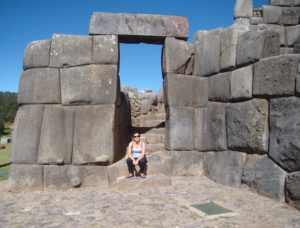
We visited Sacsayhuaman during one of our first days in Cusco. We had bought the Boleto Turistico (General Tourist Ticket) and wanted to see some of the local sights. We had 2 days in Cusco before we were set to hike the Inca Trail to see Machu Picchu, and then another day in Cusco after we got back from Machu Picchu. Of our 3 total days in Cusco, we spent spent one day exploring the city, one day exploring the ruins of Pisac in the Sacred Valley , and then another day seeing Moray and the Salineras de Maras .
We decided to visit Sacsayhuaman after checking out the Plaza de Armas. We saw that it wasn’t too long of a walk, so we opted to walk up the hill instead of taking a taxi. The walk was a lot harder than we gave it credit for due to the altitude. We had to stop to catch our breath a few times. But, we really liked seeing the shops and residences along the streets, and we also liked stopping at the Mirador de Plaza San Cristobal (viewpoint in front of the San Cristobal church).
As we walked up the hill, we caught our first glimpse of the fortress walls of Sacsayhuaman. The rocks were absolutely massive! As we got to explore the inside of the park, we just couldn’t fathom that people moved those heavy stones from quarries, shaped them to perfection, and then lifted them on top of each other. It was truly outstanding.
We enjoyed roaming around the complex and taking lots of pictures. In hindsight, it would have been nice to have had a guide to explain the significance of everything we saw. We’d recommend to others that you book a private tour so you can still roam at your own pace, but you’d have someone there to explain everything to you. (And it’s always nice to have someone to take photos of you too!)
Looking for a hotel in Cusco? We stayed at the Apu Huascaran Hostal and would recommend it to others! For a list of over one thousand accommodations in Cusco, click here .
Nearby Activities
Cristo blanco.
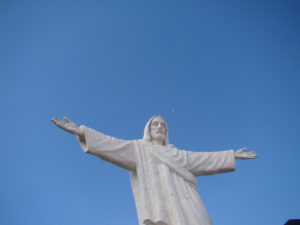
The Cristo Blanco statue (translated to “White Christ” statue) is located just a short walk away from Sacsayhuaman. The statue resembles Brazil’s Christ the Redeemer statue, but on a much smaller scale. The statue is 26 feet high and was a gift from Palestinians that sought refuge in Cusco after World War II. The statue is on Pukamoqo Hill, which was a site of spiritual importance to the Inca. It’s said that soil from all 4 quarters of the empire are located on the hill. (We wrote all about our hike to Cristo Blanco .)
Plaza de Armas
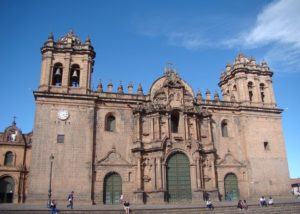
Plaza de Armas is located in the heart of Cusco. This plaza was built by the Spanish to replace the Inca’s Great Inca Square, which was twice the size of the current plaza. In the center of the square is a statue of Tupac Amaru II , who led an uprising against the Spanish and was later executed for his efforts. There are two churches in the square: Cathedral Basilica of the Assumption of the Virgin (known as the Cusco Cathedral) and the Church La Compañía de Jesús.
Hatun Rumiyoc Street
This narrow cobblestone street was one of the Inca’s original roads. The road is a pedestrian street and cars are not permitted on it. As you walk down the street, you’ll see large stones that were once part of the Palacio Inka Roca . The street is especially famous because it houses the 12-Angled Stone, which was a heavy stone that the Inca carved with 12 different angles to perfectly fit the wall.
Qoricancha Temple
Qoricancha, also spelled as Coricancha, is the Inca’s Temple of the Sun and was dedicated to Inti, the Sun God. It was constructed in about the year 1200 and was the most important religious site in Cusco. The name Qoricancha means “Walls of Gold.” The temple walls were lined with gold, and many gold statues and artifacts filled the temple.
San Pedro Market
The San Pedro Market is less than a 10-minute walk from the Plaza de Armas. At the market, you’ll likely see Peruvians dressed in traditional clothing. There are tons of vendors at the market, selling everything from produce to souvenirs. There’s lots of fresh-made juices at the market, so be sure to try several different flavors.
If you’re visiting Cusco, you’ll definitely want to make time to see the Inca ruins at Sacsayhuaman. We thought that the site was absolutely huge, and there’s so much to see. The ruins are very easy to access from Cusco. If you’re interested in seeing Inca ruins, then you have to add Sacsayhuaman to your itinerary.
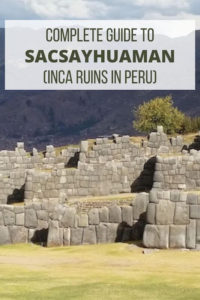
Disclaimer: We always strive for content accuracy. Since the time of publishing, travel-related information regarding pricing, schedules, and hours may have changed. Please look up such information directly from each vendor or institution for the most current information.
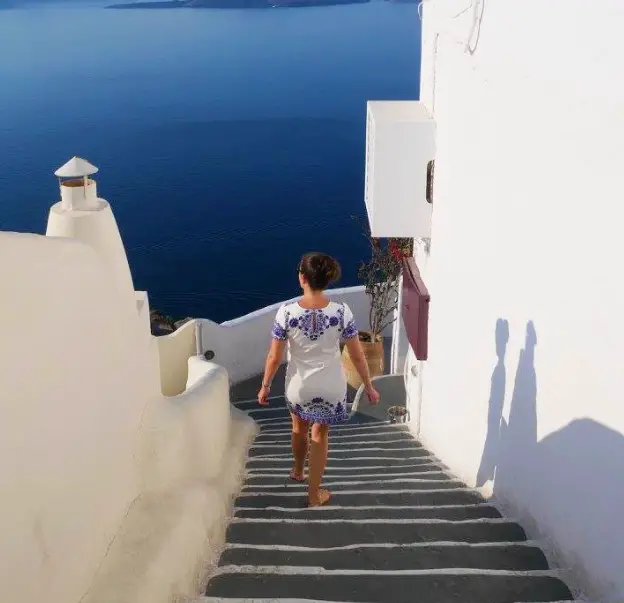
Hi, I’m Kelly!
After studying abroad in Spain, I became passionate about international travel. Since then, I’ve traveled to 6 continents and 36 states within the United States. When I’m not travel blogging, you can find me hiking, reading books in Spanish, or playing cribbage. I hope my blog inspires you to see the world!

Are you sure you want to close the session?
La cuenta ya se encuentra activa
Or enter your e-mail:
Recover your offer
We will send you a 4-digit code shortly
Enter the 4-digit code and your new password
Enter your search here
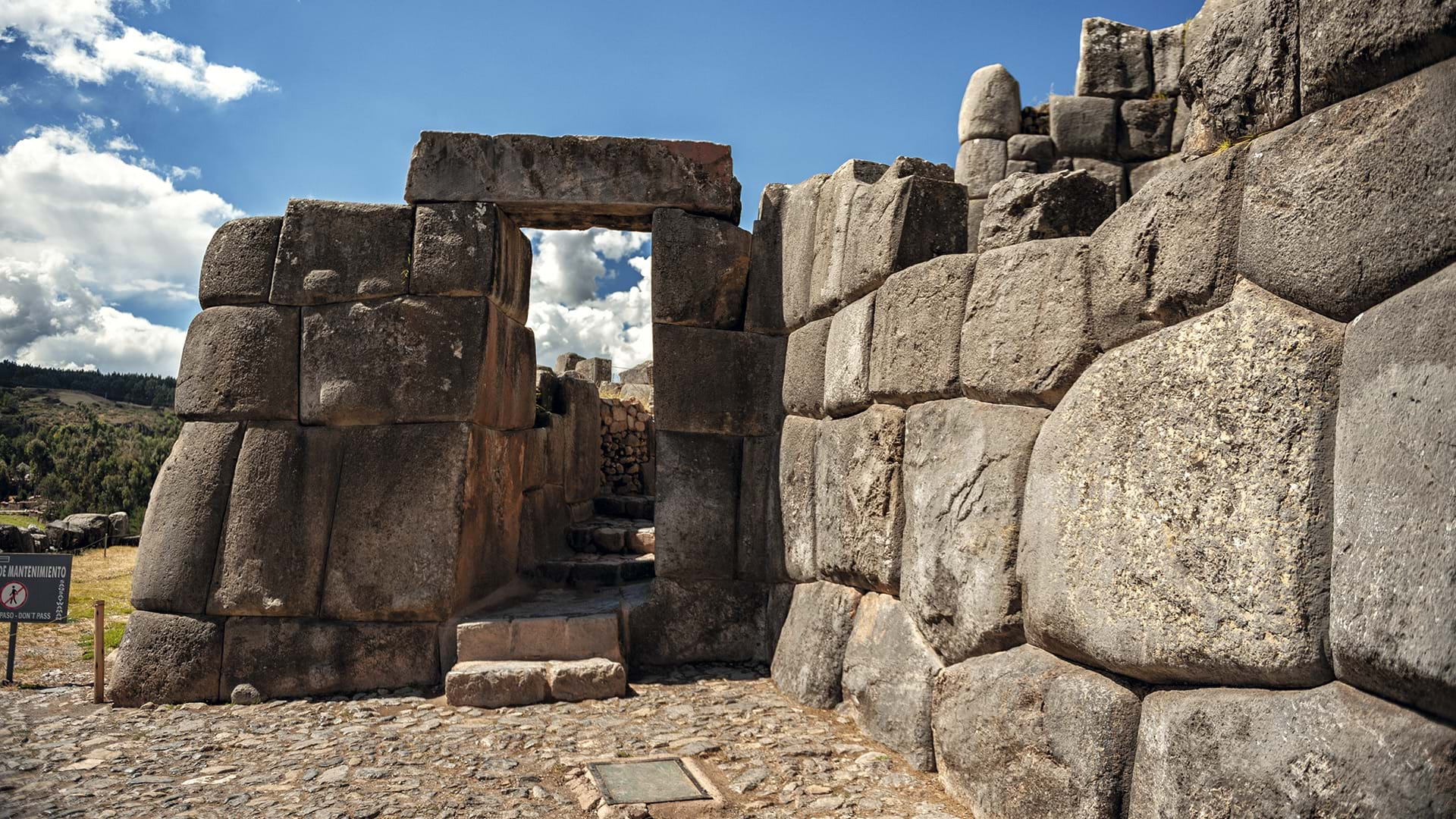
- Sacsayhuamán, an imposing jewel of pre-Hispanic engineering
In the city of Cusco there is an amazing archaeological building.
Sacsayhuamán, Cusco Credit: César Vallejos / PromPerú
peru.travel
Visiting the fortress of Sacsayhuamán (Quechua word meaning satisfied falcon), one of the most important archaeological complexes of the Inca Empire, is admiring the precision of the engineering used and delving into the history of what was once the greatest civilization in America pre-Columbian. And contemplating its harmonious carved stone structures make its construction process something difficult for visitors to imagine and explain.
This complex, which occupies an area of 3,000 hectares, would have required the work of 25,000 men -among architects, astronomers, engineers, stonecutters and stone transporters-. According to archaeological studies, it is estimated that its construction took more than 90 years from 1350 A. C., ordered by the Inca Pachacútec, and would have been completed in the 16th century by his successor, Túpac Inca Yupanqui.
Fortress or ceremonial temple? According to the chronicler Garcilaso de la Vega, this ceremonial fortress "was the greatest architectural work that the Incas would accomplish during its heyday”. Although its usefulness has not been fully clarified, it is believed that it was intended for military purposes: the Inca warriors would be trained here. However, when contemplating its architecture, it appears to be a great ceremonial temple dedicated to the god Inti (Sun) and perhaps this is the right function.
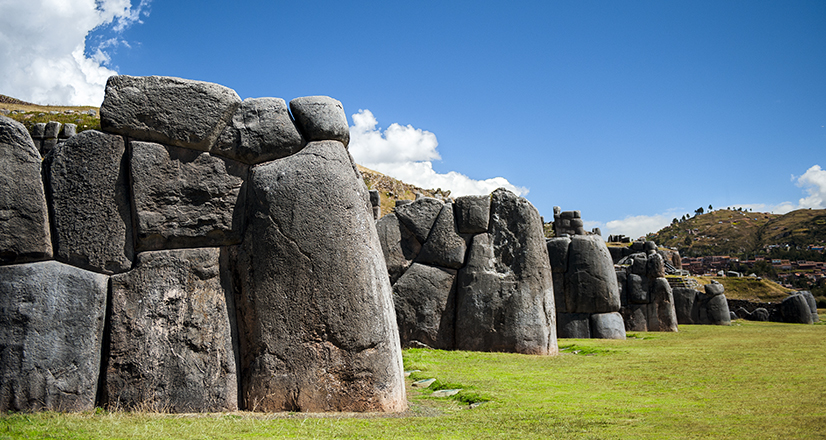
The construction of Sacsayhuamán took about 90 years and 25,000 men participated in it. Credit: César Vallejos / PromPerú.
The main characteristic of this cyclopean construction is its large blocks of stones, some over 9 meters high and weighing 100 tons. They are carved in such a way that they fit perfectly not only those that are located at its base, but also those that are superimposed on each other without using any type of cement. Inside, there were found big warehouses for food and weapons, as well as irrigation canals, ceremonial temples and dozens of complexes.
Cult of the God Inti In the back area of the complex the Inti Raymi ceremony, also known as the 'Fiesta del Sol', is held every June 24. In Inca times, tens of thousands of people made pilgrimages there to make all kinds of offerings, a tradition that continues to this day. The locals, dressed in colorful costumes, perform typical dances in a staging that has become a majestic tourist attraction.
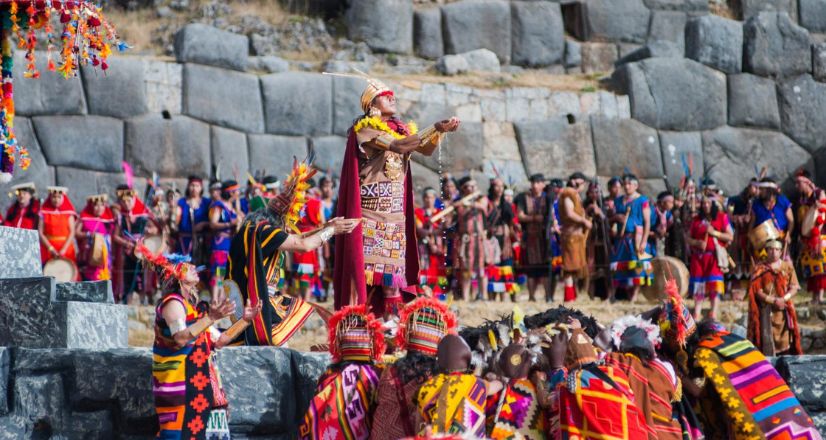
Every year, it welcomes thousands of visitors who come to witness the Inti Raymi. Credit: Heinz Plenge Pardo / PromPerú.
How to get there? There are four ways to get there from the center of Cusco : on foot -the journey takes approximately 30 minutes from the Plaza de Armas-, by taxi service -it costs about 15 soles-, by bus or with a tour service.
Without a doubt, witnessing the fortress of Sacsayhuamán not only makes its visitors know a little more about the Inca Empire, but they also end up dazzled by the great skill of the engineers of the pre-Hispanic era.
Sources: La República / Andina / Aboutespañol
Follow us on social media Facebook | Instagram | Twitter | YouTube

Find out more
Ollantaytambo: an architectural jewel on the way to Machu Picchu
Related articles
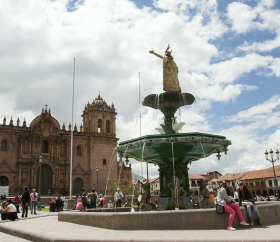
Cusco: 6 destinations you should not miss on the 'navel of the world'
Discover everything the main tourist attraction of Peru has to offer.
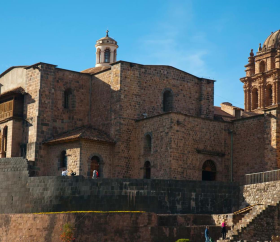
5 museums in Cusco that you should visit
Plan your trip to Cusco and start a cultural tour that will surprise you.
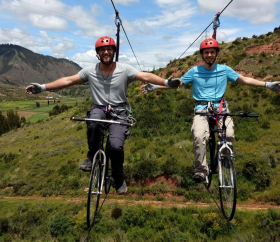
What adventure sports can you practice in Cusco?
Live the most extreme experiences in the impressive Sacred Valley.

Visiting Sacsayhuaman: The Mysterious Cusco Inca Ruins
If you are traveling to Cusco, Peru you may be considering visiting Sacsayhuaman Inca Ruins. Without question, the ancient fortress of Sacsayhuaman is a remarkable testament to the ingenuity and stone masonry of the Inca civilization. Sacsayhuaman is a must-visit destination for those seeking to immerse themselves in the wonders of ancient Andean culture.
Perched 755 feet above Cusco, Sacsayhuaman is an awe-inspiring archaeological site that is worth visiting. These Inca ruins offer a glimpse into the rich history and architectural prowess of one of the world’s greatest empires. Marvel at its massive stone walls that have withstood centuries of time.
I recently returned from a vacation in Peru. I will share essential tips for visiting Sacsayhuaman in this travel guide. The Inca fortress of Sacsayhuaman is worth visiting to delve into the mysteries and marvels that await at this extraordinary site.
DISCLOSURE: PLEASE NOTE THAT SOME LINKS BELOW CONTAIN AFFILIATE LINKS. I EARN A MINIMAL COMMISSION THAT SUPPORTS MY SMALL BUSINESS AT NO ADDITIONAL COST TO YOU.

Where Is Sacsayhuamán Located?
Sacsayhuaman is on the outskirts of Cusco City. The area is the former Inca capital and a UNESCO World Heritage Site . It is approximately 1.5 miles from the main square of Cusco. Perched 3, 700 meters above Cusco (or 755 feet ), it overlooks the expansive valley below.
Don’t get altitude sickness in Cusco – read this blog for tips to prevent it!
Is Sacsayhuaman Worth Visiting?
Sacsayhuaman (also spelled Saksaywaman and Saqsaywaman ) is definitely worth visiting when you travel to Peru. Believed to be one of the largest ancient Inca fortresses, it spans over 7400 acres and has walls almost 60 feet high.
Remarkably, locals used over 5000 stones, some weighing in excess of 100-300 tons , to construct the site. Incas transported these massive boulders 10-20 miles without the use of the wheel. Over 20,000 villagers used shear manpower, logs, and hemp ropes to drag stones from a quarry to build the site. In fact, it took over 50 years to complete Sacsayhuaman .
Another notable feature of Sacsayhuaman is the precision in which it was crafted. Stones and rudimentary bronze tools were used to carve the limestone of the massive rock fortress with shocking precision. Even though the Incas constructed Sacsayhuaman without mortar, you cannot fit a piece of paper between the perfectly fitted stone walls.
Want to know the best things to do in Cusco? For a helpful Cusco itinerary , read this blog post.

History of Sacsayhuaman
Sacsayhuaman was constructed during the reign of King Pachacuti 1438-1471 CE. The founder of the Inca Empire, emperor Mano Capac , created the city of Cusco in a puma shape.
According to our tour guide, Sacsayhuaman was the head of the puma and its tall tower resembles its eye. The puma body is shaped by the Tullumayo and Huatanay rivers. It’s tail, meets in the place called Pumaq Chupan where these rivers meet. Its heart was the holy square of the Temple of the Sun .
Sadly, the Spanish conquered Cusco and partially dismantled the ancient ruins . Today, only about 40% of the original structures of Sacsayhuaman remain .
Learn about Sacred Valley Tours to Moray Inca Ruins and the Maras Salt Pools in these blog posts.

What Was Sacsayhuaman Used For?
The exact purpose of Sacsayhuaman remains a mystery. Experts believe the main function of Sacsayhuaman was for military purposes. In addition, the site contains aqueducts, terraces, and a religious shrine. Our tour guide also told us Incas used a giant reflection pool for astronomical purposes. Today locals use Sacsayhuaman as a site for festivals and ceremonies.

How to Pronounce Sacsayhuaman Cusco Inca Ruins
If you need clarification to pronounce Sacsayhuamán ruins, listen to the video below. The name, pronounced “ sexy woman “, makes this Cusco site worth visiting. Our teenagers certainly had a few laughs pronouncing its name.
Visiting Sacsayhuaman From Cusco
Getting to Saqsaywaman from Plaza de Armas in Cusco is an easy half day trip. You can get to Sacsayhuaman by taxi, colectivo or walking. Keep reading to find out how to get to Saqsaywaman from Cusco!
Save time! Click here to book an easy city tour from Cusco to Sacsayhuaman !
Taxi to Sacsayhuaman
The most efficient way to get from Cusco to Saqsaywaman is by taxi. We visited Sacsayhuaman the day after we arrived in Cusco. Since we did not have time to acclimate, we opted to travel by taxi. It costs about 30-40 soles by taxi.
Typically, the drive to Sacsayhuaman takes approximately 10 minutes. However, pay attention to traffic. Since we visited during the Inti Raymi celebration, traffic was awful. The journey took us over 45 minutes!
Seeking Stamps Tip : I recommend traveling by taxi if you are not used to the altitude.
Visiting Sacsayhuaman by Colectivo
Alternatively, you can take a “colectivo”, or shared van, to Sacsayhuaman. Get off at the Cristo Blanco statue and walk to Sacsayhuaman. The price to travel by collectivo is 2-3 soles.
How to Walk From Cusco to Sacsayhuaman
Visitors can also walk to Sacsayhuaman from the Cusco city center. The journey takes about 30-45 minutes and is a steep uphill walk. Simply follow Sweden street to Resbalosa. Then, follow the road after San Cristobal Church. Keep in mind that the altitude makes the walk much more strenuous.
Are you planning Machu Picchu tours? Read how to get there via the Hiram Bingham Train from Cusco !

What to See When Visiting Sacsayhuaman
Inca tunnels (chincanas or chinkanas).
One of the first areas you visit are the Inca tunnels, known as Chinkanas. The name “chinkanas” in Quechua translates to “ the place where one is los t” . Since the 1920’s, the cave system has been sealed off because numerous people have gone missing inside.
These miles of tunnels form a complex underground labyrinth. According to our tour guide, local legend states that the tunnels lead to the corichana temple of the sun . However, no evidence has proven that theory.
When you visit Sacsayhuaman you can enter a small portion of the Chinkana Chica cave. Watch your head, because you explore these cramped caves in the dark. To be honest, it was eerie crouching though the cave!
Seeking Stamps Tip: I highly recommend using a Sacsayhuaman tour guide to help you understand the significance of the sites.

Throne of the Inca
Next make your way to an open field to view the Inca’s Throne at Sacsayhuaman. Seats were carved from large rocks to form the Throne of the Inca. Inca nobility used these seats during ceremonies and celebrations.

Suchuna Rock Slides (Rodaderos)
As you continue visiting Sacsayhuaman you make your way to the Suchuna. Suchuna is Quechua for “ slides “. They are also called Rodaderos which means “ playground or slides for children ” because Inca children played here years ago.
Experts believe volcanic activity or rocks sliding along fault lines created wave-like formations. The result was towering natural slides made of diorite rock.
It’s understandable why Inca children played here. Our kids said climbing and sliding down the smooth rocks was the highlight of our visit!
Seeking Stamps Tip: Use caution because you hit the ground with considerable force. We saw a woman slide and jam her ankle at the bottom. Ouch!

Sacsayhuaman Walls
Also notable at Sacsayhuaman are the three zig-zagging fortress walls that offered protection from potential invaders. These impressive walls reach a height of almost 60 feet high and expand almost 1770 feet wide.

Doors at Sacsayhuaman
As you explore the walls at Sacsayhuaman, you will see three trapezoid shaped doorways. These doorways lead to the interior and towers of the fortress.
The three doors at Saqsaywaman Cusco Inca Ruins are called:
- Ajawanapunku
- Wiracocha Punku

The Three Watchtowers at Sacsayhuaman (Torreones)
There were three watchtowers at Sacsayhuaman before its destruction. You can find their remains at the top of the zig-zagging walls.
- Paucamarca- this former tower was used for water storage.
- Muyumarca- This the tower where General Cahuide jumped to avoid being taken as a prisoner during the Inca resistance in 1536.
- Sallaqmarca- It was destroyed but its remains are visible in the center of Sacsayhuaman.

Sacsayhuaman Visitor Information
Opening hours of sacsayhuaman:.
- Daily 8:00 am-5:30 pm
- It is open year-round
Entrance Fee for Sacsayhuaman:
There is not an exclusive entrance ticket for Saqsaywaman. When visiting Sacsayhuaman you must buy a tourist ticket that includes the Sacsayhuaman entrance fee. It costs 70 soles (cash only) for foreigners and students. It can be purchased at the Sacsayhuaman ticket booth or at the central office in Cusco.
Keep reading below to learn more about buying the tourist ticket for entrance to the Sacsayhuaman Peru ruins.

Buy Cusco Tourist Tickets When Visiting Saqsaywaman
If you plan to visit several sites near Cusco, consider buying a boleto turistico, or “tourist ticket”. It includes entrances into several sites in the Sacred Valley. You can choose from a Cusco Integral ticket or partial ticket depending on how many sights you plan to visit. Read more about the options for Cusco tourist ticket here.
Comprehensive Tourist Ticket
The Cusco Comprehensive ticket includes the entrance for Sacsayhuaman plus Q’engo , Puka Pukara , Tambomachay , Pisac , Ollantaytambo , Chincero , Moray and several museums. It covers 16 locations in total.
- The cost of a Cusco Integral Tourist Ticket for foreigners is 130 soles and 70 soles for foreign students.
Partial Tourist Ticket
The Cusco Partial ticket has three circuit options. For entrance to Sacsayhuaman, choose circuit one. This circuit includes Sacsayhuaman, Q’engo, Puka Pukara and Tambomachay.
- A Partial Tourist Ticket costs 70 soles for foreigners and foreign students.
Click here to book a full day private tour of sites in the Sacred Valley

Best Time to Visit Sacsayhuaman
The best time to visit Sacsayhuaman is during the dry season in Peru . This typically falls between the months of April to October. During this time temperatures range from lows in the 30-40’s Fahrenheit to upper 60’s. During our visit mornings were very chilly and warmed up considerably throughout the day.
December through March has the most precipitation which can cause conditions at Sacsayhuaman to be wet and muddy.
Seeking Stamps Tip: To avoid crowds at Sacsayhuaman, try to visit early in the morning or before closing time.

What to Bring When Visiting Sacsayhuaman
- dress in layers
- comfortable walking shoes
- cash for souvenirs near the exit
Read more about hiking the Inca trail and exploring Rainbow Mountain !

Attractions Near Sacsayhuaman
Cristo blanco.
After you tour Sacsayhuaman, walk over to the Cristo Blanco statue . This is a mini replica of Rio de Janeiro’s Christ the Redeemer statue which stands 26 feet tall. The best part is it’s free, close to Sacsayhuaman, and offers more gorgeous views of Cusco.
If you have time, explore the nearby San Blas neighborhood of Cusco . It is filled with colonial buildings, narrow cobblestone streets and local artisans.
Check out these blogs about visiting the Peruvian Amazon at Puerto Maldonado and packing for the Amazon in Peru !

Visiting Sacsayhuaman: FAQ’s
1. what is the altitude at sacsayhuaman.
Sacsayhuaman is at an altitude of 3, 700 meters or 12,139 feet. In fact, its approximately 984 feet higher than Cusco City. If you have not acclimated to the high altitude, you may feel slightly short of breath and tired when you visit Sacsayhuaman.
2. Who Built Sacsayhuaman?
Sacsayhuaman ruins near Cusco were built by over 20,000 Incas under the reign of King Pachacuti in the 15th century.
3. How Much Does It Cost to Visit Sacsayhuaman?
There is no exclusive entrance ticket for Saqsaywaman. You must buy a partial tourist ticket for circuit 1 which costs 70 soles for foreigners. It includes admission to Sacsayhuaman, Q’engo, Puka Pukara and Tambomachay. Purchase the ticket at the Sacsayhuaman entrance or central office in Cusco.
4. What Does Sacsayhuaman Mean in English?
Sacsayhuaman means “the place where the hawk is satisfied”. It is derived from “sacsay” Quechua for “satisfy” and “huaman” which translates to “hawk”.
5. Can You Walk to Sacsayhuaman?
You can walk to Sacsayhuaman from the Cusco city center. The walk takes approximately 30-45 minutes and is a strenuous uphill journey given Cusco’s high elevation. Consider acclimating to before you attempt the trip, or take a taxi to the site.
Are You Visiting the Jungles of Peru- Read This Post About Fishing For Piranhas !

Visiting Sacsayhuaman: Final Thoughts
In conclusion, visiting Sacsayhuaman is an unforgettable experience that offers a glimpse into the rich history and impressive architectural achievements of the Inca civilization. Whether you are interested in history, culture, or simply seeking a breathtaking view, a visit to Sacsayhuaman should be high on your travel list. So next time you find yourself in Peru, don’t miss the chance to explore the awe-inspiring Cusco archaeological sites.
Read More: Explore Machu Picchu Wildlife In This Blog Post!

Jenny is a travel enthusiast who has explored the world for 20+ years and visited over 40 countries. She currently lives in sunny Carlsbad, California, with her husband, two teenagers, and dogs. As a part-time traveler, you will find her local posts about the San Diego area and advice on a variety of international destinations.
Related Posts

Clothes For The Rainforest: Your Amazon Jungle Packing List

Is Moray Peru Worth Visiting: The Mysterious Sacred Valley Ruins

How to Spend 4 Days in Cusco: Your Bucket List Cusco Itinerary

Is Puerto Maldonado Worth Visiting: Explore the Amazon in Peru

Fishing for Piranhas: Catching & Eating Piranhas in the Amazon (2024)

Is Maras Worth Visiting: Explore Peru’s Salineras de Maras
Leave a reply cancel reply.
You must be logged in to post a comment.
What are you looking for?

- Exploring the Sacsayhuaman: A Comprehensive Guide
- Written by: David Kosloski
- Cusco Peru Blog

Sacsayhuaman, pronounced as “ Sexy Woman ,” is an ancient fortress and complex located in Cusco , Peru . This archaeological site holds immense historical and cultural significance , captivating visitors with its impressive architectural features and rich Inca heritage.
The history of Sacsayhuaman dates back to the 15th century during the reign of the Inca Empire . It was constructed under the leadership of Inca Pachacuti and served various purposes, including religious , administrative , and defensive functions. The construction techniques and precision of stonework displayed at Sacsayhuaman are awe-inspiring, showcasing the advanced engineering skills of the Incas.
The architectural features of Sacsayhuaman are remarkable and are a testament to the Inca civilization’s ingenuity . The intricate stonework, without the use of mortar, and the massive stone walls create a fortress that once dominated the surrounding landscape. The layout of the main structures and the defense systems implemented at Sacsayhuaman further highlights the strategic importance of this monumental site.
Today, Sacsayhuaman is a popular tourist destination , attracting visitors from around the world who are eager to explore its historical and cultural significance. The site offers a glimpse into the ancient Inca civilization and its religious practices . Visitors can also witness traditional celebrations and festivals that take place within the complex, providing an immersive experience of Inca traditions and customs.
Despite its enduring legacy, Sacsayhuaman faces challenges in preserving its architectural marvels . Threats to its preservation include natural erosion, weathering, and human activities. Various preservation and restoration efforts have been implemented to protect the site and ensure its continued existence for future generations to appreciate and learn from.
In this article, we delve deeper into the history , architectural features, tourism value , and preservation efforts of Sacsayhuaman. Join us on this journey as we unravel the mysteries and marvels of this iconic Inca fortress.
Submit a Comment Cancel reply
Key takeaways:, history of sacsayhuaman, what does its name mean, where is sacsayhuaman located, construction and purpose of sacsayhuaman, architectural features of sacsayhuaman, stonework and construction techniques, main structures and layout, different areas of the fortress, the three terraces, three guarded towers, the enclosures, inca throne, el rodadero (suchuna), the tunnels (chincanas).
- Warmi K’ajchana
Archaeological sites nearby to visit
Puka pukara and tambomachay, tourism and cultural significance of sacsayhuaman, visiting sacsayhuaman today, how to get to sacsayhuaman, join a guided city tour, walk up the hill, drive by car or taxi, take public transportation, the best time to visit sacsayhuaman, cusco tourist ticket to visit sacsayhuaman, celebrations and festivals at sacsayhuaman, controversies and preservation efforts.
- Threats to Sacsayhuaman's Preservation
Preservation and Restoration Efforts
- Before You Go...
Some Facts About Sacsayhuaman:
Sacsayhuamna faqs, what is sacsayhuaman and where is it located, what is the significance of the name sacsayhuaman, what is the purpose of sacsayhuaman, how can i visit sacsayhuaman, what is the historical significance of sacsayhuaman, how was sacsayhuaman constructed.
Sacsayhuaman is an ancient Inca fortress located in Peru, known for its impressive stone architecture and historical significance.
The construction of Sacsayhuaman was a remarkable feat, with skilled Inca engineers using advanced stonework and construction techniques.
Today, Sacsayhuaman is a popular tourist destination and continues to hold cultural significance through celebrations and festivals. Additionally, efforts are being made to preserve and restore this historic site.
Check out this Video on Sacsayhuaman by Planete Raw:

Discover the captivating history of Sacsayhuaman, a remarkable archaeological site nestled in the heart of Peru. Unravel the mysteries surrounding the construction and purpose of this ancient marvel.
Delve into the rich heritage and cultural significance of Sacsayhuaman as we embark on a journey through time. Brace yourself for enlightening insights into the ingenuity of the builders and the profound meaning behind this monumental structure. Get ready to immerse yourself in the fascinating world of Sacsayhuaman’s history.
The name Sacsayhuaman (also spelled Saksaywaman) means “Satisfied Falcon” in the Quechua language . This name likely refers to the falcon-like shape of the huge stone walls that zigzag across the hillside.
The walls seem to resemble the wings of a falcon when seen from above. The name also suggests the fortress was seen as a strong, predator-like guardian overlooking Cusco.
Sacsayhuaman is located on a steep hillside just outside the city of Cusco, Peru. It sits at an altitude of 3,701 meters above sea level and overlooks the northern outskirts of Cusco. The fortress is situated only about 2 kilometers from Cusco’s main square, Plaza de Armas, making it an easy trip from the city center. Its strategic hilltop location gave it commanding views of Cusco and the entire valley.
Sacsayhuaman is a remarkable archaeological site in Peru that showcases the construction and purpose of Sacsayhuaman. With a rich history and unique architectural features, Sacsayhuaman was built during the Inca Empire, specifically under the reign of Emperor Pachacuti in the 15th century.
The Incas , known for their highly skilled stonework, used massive limestone blocks to construct the complex structures found at Sacsayhuaman. What makes their construction even more impressive is that the stones were meticulously cut and fitted together without the need for mortar, highlighting the advanced engineering techniques of the Inca civilization.
Beyond its remarkable construction, Sacsayhuaman served multiple purposes for the Inca civilization. It functioned as a military fortress, playing a crucial role in defending the city of Cusco. Situated on top of a hill, Sacsayhuaman offered strategic advantages by providing excellent vantage points to spot any potential threats approaching the city.
In addition to its military significance, Sacsayhuaman was also a significant ceremonial center. This sacred site witnessed various religious rituals and ceremonies, contributing to the spiritual and cultural practices of the Inca Empire. The intricate layout and awe-inspiring structures within the complex likely represented the power and grandeur of the Inca Empire.
Sacsayhuaman’s astronomical importance is another compelling aspect. Some historians speculate that certain structures within Sacsayhuaman were aligned with specific celestial observations, particularly during solstices and equinoxes . This suggests a potential connection to Inca cosmology and their understanding of the stars and celestial bodies.
Undoubtedly, the construction of Sacsayhuaman is an engineering marvel, showcasing the exceptional craftsmanship and architectural prowess of the Inca civilization. The precision in fitting enormous stones, some weighing up to 200 tons, stands as a testament to their mastery of stonework and architecture.
Overall, the construction and purpose of Sacsayhuaman vividly demonstrate the Inca’s achievements in military strategy, ceremonial practices, and architectural brilliance. Today, this ancient complex continues to captivate visitors and serves as a testament to the ingenuity and cultural significance of the Inca Empire.

Sacsayhuaman, a marvel of architectural ingenuity, showcases impressive features that have stood the test of time. Delving into the stonework and construction techniques, we uncover the secrets behind its enduring strength.
Exploring the main structures and layout unveils the grandeur and purpose behind this ancient site. Prepare to be amazed as we journey through the remarkable architectural features of Sacsayhuaman.
Stonework and construction techniques played a crucial role in the development of Sacsayhuaman. The Inca Empire was renowned for its advanced architectural skills, and Sacsayhuaman stands as a prime example of its expertise.
- Precision: Demonstrating remarkable precision, the stonework at Sacsayhuaman showcases stones fitting together so flawlessly that not even a blade of grass can fit in between them. This extraordinary level of accuracy was attained without the utilization of mortar or cement.
- Interlocking design: Sacsayhuaman utilized carefully shaped and fitted stones using a technique known as “ashlar”. Each stone was meticulously carved to seamlessly interlock with the adjacent ones, resulting in a robust and stable structure.
- Megalithic stones: Numerous stones employed in the construction of Sacsayhuaman are colossal, weighing up to 200 tons . These massive stones were extracted from nearby locations and then transported to the site using a system of ramps and ropes.
- Dry stone construction: Sacsayhuaman was constructed using a technique called “dry stone construction”, where the stones are laid without the need for mortar. The precision and interlocking design of the stones ensure the stability of the walls and structures.
- Zigzag walls: One noteworthy characteristic of Sacsayhuaman is its walls are shaped in a zigzag pattern. This design not only enhances the architectural beauty but also provides additional strength and stability to the structure.
Fun fact: The construction of Sacsayhuaman is believed to have taken several decades to complete, involving the employment of thousands of workers. The magnitude and complexity of the stonework and construction techniques employed in Sacsayhuaman showcase the remarkable engineering skills of the Inca civilization.
The main structures and layout of Sacsayhuaman can be described in a table:
Sacsayhuaman is famous for its magnificent stone terraces that form the base of the fortress walls. These terraces were built with megalithic boulders, some weighing over 100 tons. The first terrace has walls that are about 9 meters tall and 350 meters long. The stones were cut and fitted together with incredible precision.
Originally, there were likely three circular guarded towers built on top of the terraces. Only the foundations of the towers remain today, but they were probably used for defense as well as food storage.
Intricately carved trapezoidal doorways can be seen at several locations across the site. These also served as astronomical markers, aligning to sun and moon positions.
On the northern end are circular enclosures built from precisely cut blocks. The zig-zag walls form three concentric circles that may have been used for ceremonial activities.
A carved stone throne sits near the top of the fortress. Inca rulers likely used this to oversee rituals and festivals occurring below.
El Rodadero is a smooth, ramp-like stone feature that may have been used for ritual activities like rolling objects downhill. ItsQuechua name Suchuna means “slide.”
Below the surface of Sacsayhuaman lies a complex network of underground tunnels and aqueducts known as chicanes. Some of these provided water to the fortress while others served as secret passageways.
Warmi K’ajchana
The Warmi K’ajchana sector contains the remains of elaborately carved stone houses and retaining walls. This was likely a residential area for Inca nobility and leaders.
Q’enko
Just outside Cusco is Q’enko, a sacred Inca site featuring a large rock outcrop with carved channels, niches, and a ceremonial altar.
Also near Cusco are Puka Pukara, an Inca fort, and military post, and Tambo yetmachay, an Inca site with fountains, aqueducts, and ceremonial baths.
Fact: The construction of Sacsayhuaman utilized an impressive engineering technique called “ashlar masonry.” This technique involved fitting stones together without the use of mortar. The precision of the stone-cutting and fitting in Sacsayhuaman is so remarkable that it is said not even a blade of grass can fit between the blocks.

Perched on a hilltop, Sacsayhuaman captivates tourists with its rich history and vibrant cultural significance. Let’s embark on a journey through this remarkable site and discover the wonders it holds.
From exploring the ruins to immersing ourselves in the local festivities, we will unveil the enchantment of visiting Sacsayhuaman today. Join us as we delve into the vibrant celebrations and festivals that breathe life into this ancient wonder. Get ready to be awestruck by the magic that awaits at Sacsayhuaman!
When visiting Sacsayhuaman today, there are several key aspects to consider to make the most of your experience. One important aspect is the entrance fees. To enter Sacsayhuaman, you will need to purchase a ticket or a tourist pass that allows access to multiple archaeological sites in the region.
Another aspect to consider is guided tours. Hiring a knowledgeable guide is recommended to fully understand the historical and cultural significance of the site. They can provide insights into the Inca civilization and the impressive architectural features of Sacsayhuaman.
Additionally, it is essential to take into account the opening hours. Sacsayhuaman is open to visitors from early morning until late afternoon. It is advisable to plan your visit early in the day to avoid the crowds and enjoy the peaceful atmosphere of the site.
Altitude considerations are also important when visiting Sacsayhuaman. Located at a high altitude, it is crucial to take precautions and acclimate properly. Stay hydrated, dress in layers, and take breaks if needed.
As you explore the site, you will discover that Sacsayhuaman covers a large area with various pathways and viewpoints to explore. Take your time to admire the intricate stonework, walk along the ancient walls, and enjoy the panoramic views of Cusco.
Respecting the site is of utmost importance as Sacsayhuaman is a UNESCO World Heritage site. It is crucial not to touch or move any stones, and to follow the instructions and guidelines provided by the staff.
Visiting Sacsayhuaman today offers a unique opportunity to step back in time and witness the architectural wonders of the Inca civilization. Immerse yourself in the history, marvel at the impressive stonework, and appreciate the cultural significance of this ancient site.
Get ready to party like it’s 1438 at Sacsayhuaman’s lively celebrations and festivals.

There are several convenient options to get up to the ruins of Sacsayhuaman:
Joining a guided group day tour from Cusco is a popular and easy way to include transportation to Sacsayhuaman. Many tours use large buses or vans to shuttle visitors directly to the site entrance. Tours are generally half-day or full-day and always include an English-speaking guide. This hassle-free option allows you to sit back and relax while learning about the site from your guide.
For a more active option, you can hike up to Sacsayhuaman on foot from Cusco’s main plaza. The uphill trek takes around 30-45 minutes depending on fitness level. The route heads up Cuesta San Blas and Triunfo streets, passing some smaller Inca ruins before reaching the top. Make sure to bring water and wear good shoes for the steep climb. Going on foot allows you to take in views of Cusco below.
Another easy option is driving or taking a taxi up the winding road to the Sacsayhuaman entrance gates. Taxis can be hired from downtown Cusco for the short 10-15 minute drive. Or rent a car and self-drive following signs pointing to “Sacsayhuaman.” The roads allow cars to reach within 5 minutes walking distance from the site. This option provides door-to-door transport convenience.
For a very inexpensive option, you can take public transportation to the site by minivan or bus. These can be caught downtown near Plaza San Francisco. Look for the buses labeled “Sacsayhuaman.” The ride takes around 15 minutes and drops you right at the main entrance. This option puts you shoulder-to-shoulder with locals heading to the site.
The best times to visit Sacsayhuaman are in the early morning and late afternoon. Midday tends to be the busiest time with large tour groups. Go early or late to avoid crowds and see the fortress at its most peaceful.
To enter Sacsayhuaman and most archaeological sites in Cusco and the Sacred Valley, you must purchase an official Cusco Tourist Ticket. Here are the details on these tickets:
- The full Boleto Turístico boleto Turístico is valid for 10 days and allows entry into 16 major sites including Sacsayhuaman, as well as Pisac, and Ollantaytambo .
- There is also a partial 1-day ticket that covers the main sites in Cusco including Sacsayhuaman, Qenqo, Puka Pukara, and Tambomachay.
- Tickets can be purchased at official sites like INC offices and COSITUC in Cusco. Bring your passport to purchase.
- Prices as of 2023 are around 152 soles ($42) for the full ticket and 135 soles ($37) for the partial.
- Children under 12 and students with ISIC cards receive discounted rates.
- Pay with cash only in local currency. ATMs are available if needed.
- Your passport and ticket will be checked upon entry at each site. Keep your ticket safe and dry.
- Try to buy tickets the day before visiting Sacsayhuaman to avoid lines. Tickets can sell out during peak season.
- Purchasing the Cusco Tourist Ticket in advance is highly recommended for easy access to all the top sites.
Having the official ticket is required and will make visiting Sacsayhuaman hassle-free. Be sure to research the current prices and types of tickets available to choose the best option for your itinerary.
Sacsayhuaman is not only a historical and architectural marvel, but it is also a place of cultural significance where various celebrations and festivals take place. These celebrations and festivals at Sacsayhuaman provide an opportunity to immerse oneself in the vibrant culture of the region. They showcase traditional art, music, and gastronomy, and serve as a reminder of the profound spiritual and historical significance of this ancient site.
During the Inti Raymi , or Festival of the Sun, which takes place every June 24th, Sacsayhuaman becomes the epicenter of a grand celebration. This festival, one of the many celebrations and festivals at Sacsayhuaman, dating back to the time of the Inca Empire, pays homage to the sun god, Inti . Visitors can witness colorful parades, traditional dances, and ceremonial rituals that showcase the rich cultural heritage of the Andean people.
Another notable festival held at Sacsayhuaman is the Qoyllur Riti , which translates to “ Snow Star ” in Quechua . This unique event, among the various celebrations and festivals at Sacsayhuaman, takes place in May or June and attracts thousands of pilgrims who embark on a journey to the Sinakara Valley , located near the archaeological site.
The Qoyllur Riti festival is one of the most important religious events in the Andean region. It combines indigenous rituals and Catholic traditions and is characterized by music, dances, and the lighting of bonfires.
Apart from the Inti Raymi and Qoyllur Riti, Sacsayhuaman hosts other celebrations and festivals throughout the year. These include Pachamama (“ Mother Earth “) ceremonies, harvest festivals, and cultural events. These celebrations and festivals at Sacsayhuaman bring together locals and visitors alike to partake in ancient traditions and vibrant festivities.
Fact: The Qoyllur Riti festival at Sacsayhuaman attracts pilgrims from all over Peru and even other parts of South America, making it one of the most important religious events in the Andean region.

While Sacsayhuaman stands as a magnificent ancient site, it has not been spared from controversies and the need for preservation efforts. We will dive into the challenges faced in preserving this marvel, exploring the threats it faces as well as the ongoing preservation and restoration efforts. Get ready to uncover the struggles and initiatives surrounding Sacsayhuaman’s existence, revealing a complex tale of safeguarding our precious historical heritage.
Threats to Sacsayhuaman’s Preservation
Sacsayhuaman, an ancient Inca fortress located in Peru, faces a multitude of threats to its preservation. These threats, which encompass both natural factors and human activities, have the potential to cause significant damage to the architectural features and undermine the site’s cultural significance. It is of utmost importance to address these threats to safeguard and preserve Sacsayhuaman for the benefit of future generations.
- Natural Factors: Sacsayhuaman is constantly exposed to harsh weather conditions, including heavy rainfall and erosion resulting from wind and water. These natural processes gradually deteriorate the stonework and structures over time. Moreover, the site is prone to seismic activity, which poses an even greater risk of damage to the intricate complex.
- Pollution and Vandalism: Being a highly popular tourist attraction, Sacsayhuaman attracts a significant influx of visitors. Sadly, some individuals engage in detrimental activities such as graffiti, littering, and even touching and removing stones. These actions not only deface the site’s beauty but also contribute to its overall deterioration.
- Insufficient Maintenance: Adequate maintenance plays a crucial role in the preservation of Sacsayhuaman. However, limited resources and funding often hinder the implementation of proper conservation efforts. Regular inspections, necessary repairs, and diligent monitoring are all imperative to prevent further damage and ensure the long-term endurance of this remarkable site.
- Unauthorized Development: The surrounding urban development and ongoing infrastructure projects present a serious threat to the integrity of Sacsayhuaman. These developments exert increased pressure on the site, leading to issues such as soil erosion, altered water flow patterns, and a substantial rise in foot traffic.
To effectively mitigate these threats, it is critical to raise awareness about the pressing preservation needs of Sacsayhuaman. Implementing stringent regulations and closely monitoring visitor behavior can greatly aid in preventing vandalism and pollution.
Collaborative efforts between governmental bodies, local communities, and international organizations are indispensable when it comes to providing the necessary resources and expertise required to implement highly effective preservation strategies. By taking these proactive steps, we can ensure the enduring protection and longevity of Sacsayhuaman, allowing future generations to appreciate and cherish this extraordinary piece of history.
Preservation and restoration efforts play a vital role in maintaining the historical and cultural significance of the ancient site at Sacsayhuaman. Several strategies and initiatives have been implemented to achieve this:
- Regular inspections and monitoring: Sacsayhuaman undergoes frequent evaluations to assess its structural integrity and identify areas requiring preservation. This proactive approach allows for prompt identification and resolution of any damage or deterioration.
- Conservation of stonework: Given the intricate stonework and construction techniques employed at Sacsayhuaman, preservation efforts primarily focus on protecting the remarkable stone structures. Measures include stabilizing loose stones, repairing damaged sections, and safeguarding vulnerable areas from weathering and erosion.
- Educational programs: Preservation efforts extend beyond physical actions. Educational programs have been introduced to increase awareness about the significance of Sacsayhuaman and the necessity of its preservation. By instilling a sense of responsibility and appreciation among visitors and local communities, these programs contribute to the long-term sustainability of the site.
- Collaboration with experts: The preservation and restoration efforts at Sacsayhuaman greatly benefit from collaborations with architectural and archaeological experts. These experts provide invaluable knowledge and skills, ensuring preservation activities are carried out effectively while maintaining the historical authenticity of the site.
- Public participation: Engaging the local community and involving them in preservation efforts is crucial for the enduring sustainability of Sacsayhuaman. Encouraging local participation through volunteer programs or employment opportunities fosters a sense of ownership and pride, thus cultivating dedication to preserving this cultural heritage.
By implementing these preservation and restoration efforts, Sacsayhuaman will continue to serve as a testament to the rich history and architectural brilliance of the Inca civilization, allowing future generations to appreciate and learn from it.
Suggestions for further enhancing preservation efforts include:
- Emphasizing ongoing monitoring and evaluation of Sacsayhuaman to ensure proactive preservation measures.
- Continuously collaborating with experts to incorporate the latest preservation techniques and methodologies.
- Establishing partnerships with international organizations and institutions to access additional resources and expertise.
- Developing sustainable tourism practices that strike a balance between visitor access and site preservation.
- Engendering a sense of pride and cultural identity among the local community by involving them in decision-making processes related to Sacsayhuaman’s preservation and management.
- Implementing educational programs that reach diverse audiences, including locals, tourists, and school groups, to raise awareness about the importance of preserving cultural heritage.
Before You Go…
Make sure to check out our blog post on the Ollantaytambo Ruins and the Coricanca Sun Temple :
- ✅ Sacsayhuaman is an archaeological complex located in Cusco, Peru.
- ✅ It sits at an altitude of 3700 meters and covers an area of over 3000 hectares.
- ✅ Sacsayhuaman is believed to have served as both a fortress and a ceremonial center.
- ✅ The complex is made up of dry stone walls constructed with huge stones.
- ✅ Sacsayhuaman is designated as a UNESCO World Heritage site.
Sacsayhuaman is an archaeological complex situated 2 km north of the main square of Cusco, Peru. It is located at an altitude of 3700 meters in the Cusco region.
The name Sacsayhuaman translates to “the place where the hawk is satisfied,” which may be due to the presence of hawks in the area.
The exact purpose of Sacsayhuaman before the Spanish invasion is unknown, but it is believed to have served as both a fortress and a ceremonial center.
To visit Sacsayhuaman, it is recommended to book a tour or take a taxi. Alternatively, visitors can walk from Plaza de Armas following specific directions. The climb is steep and takes around 30-40 minutes.
Sacsayhuaman was the most important military base of the Inca Empire and is considered one of the greatest Inca structures, comparable to the Roman Colosseum. It played a significant role during the Inca rebellion against Spanish attacks.
Sacsayhuaman was initially built with mud and clay but later replaced with enormous stones, some weighing over 100 tons and standing over 4 meters tall. The construction took over 50 years and 20,000 workers to complete.
Got something to say? Post a comment or send us an email below.
Your email address will not be published. Required fields are marked *
Save my name, email, and website in this browser for the next time I comment.
Don't subscribe All new comments Replies to my comments Notify me of followup comments via e-mail. You can also subscribe without commenting.
Submit Comment
Have Questions? Contact us!
Sacsayhuaman: Ruins of a Magnificent Inca Fortress

Foreigners often have difficulty pronouncing Sacsayhuaman, so tour guides joke that Sacsayhuaman sounds a lot like “sexy woman” in English.
The archeological site of Sacsayhuaman, located on a high hill above Cusco , is characterized by colossal stone pieces weighing several hundred tons . Inca builders cut and polished these huge stones to form into terraces of zigzagged walls that extend hundreds of feet. Although only a small portion of the original site remains, Sacsayhuaman’s Cyclopean dimensions continue to inspire awe at the scale and audacity of Inca stone architecture . Over the course of many centuries, the site has been a mute witness to a millenarian history of pre-Columbian state-formation, European colonization, struggles for independence, and the making of contemporary Peru.
Sacsayhuaman
The Fortess: Sacsayhuaman’s role as Cusco’s defender Views and sights: Walk through history How to get there
The Fortress: Sacsayhuaman’s role as Cusco’s defender
The initial expansion of the Inca Empire provides the context for the history of Sacsayhuaman. Until the early 15th century, the presence of rival populations, especially the Chanca confederation of the central highlands, limited the ability of the Cusco kingdom to expand territorially. In the year 1438, the Chanca attacked Cusco. Pachacutec, son of Viracocha Inca and second in line to the throne after his brother Urco, led a successful defense against the invaders. For this outstanding achievement, Pachacutec was crowned as the new Inca and he began a series of military campaigns against Cusco’s neighbors, thus marking the formal beginning of the “Imperial” age of the Inca state.
Cusco Tours:

To celebrate his triumphs and as part of his imperial vision, Pachacutec commanded his architects to redesign the entire urban trace of Cusco city to resemble the figure of a puma. Sacsayhuaman represented the head of the feline. Aside from its figurative role, the site also served as a center of political control and logistical support and as a stage for religious ceremonies.

Pachacutec’s rule was a lengthy one (1438-1471), but the building of Sacsayhuamann required nearly a century and was not completed until the eve of the Spanish conquistadors’ arrival to Cusco in 1533. In his post-conquest history of the Inca Empire, the mestizo chronicler Inca Garcilaso de la Vega (1539 – 1616) son of a Spanish colonial official and an elite Inca woman, wrote that the construction project demanded the lives of approximately 20,000 men over the course of several decades. Much of the stone used to build the complex was brought from quarries located 16-32 kilometers (10-20 miles) away across very hilly terrain. Without the use of wheels, vast numbers of laborers were needed for the sole purpose of transporting the huge stones. The fortress is thus representative of the Incas’ capacity to mobilize natural and human resources for imperial goals.
Sacsayhuaman was dismantled in the years following the Spanish Conquest. For generations, its stones served as construction material for Cusco’s churches and houses. It was not until the 1940s that residents began to respect the value and significance of the site and organized to protect it.
In 1944, Cusco residents started to stage reenactments of the pre-Columbian ceremony, Inti Raymi. Performed on the date of the austral solstice (June 24), the ritual pays homage to the Sun, the most important Inca deity. The key performances of Inti Raymi take place on the esplanade of Sacsayhuaman. In the present day, cultural patrimony policies to preserve the site are adamantly enforced.
Views and sights: Get a feel for the history
Only about twenty percent of Sacsayhuaman’s original buildings and structures remain intact. Visitors can nonetheless appreciate a handful of i nteresting and hidden details in this monumental structure .
Sacsayhuaman’s baluartes are the site’s primary defensive feature, and consist of staggered walls with a saw-like appearance. These walls are built with enormous stones averaging between nine and a couple of hundred tons. By creating multiple layers of combat both vertical and horizontal, the bulwark construction provides a highly tactical position to defend against attacks
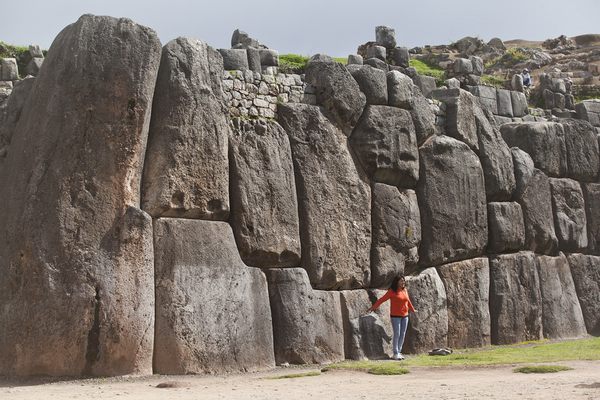
Curiously shaped stones can be found throughout the complex. The “paw” is a set of stones that resemble a mountain lion’s paw. The “throne,” also known as K’usilluc Jink’ian , is presumably where the Inca presided over important ceremonies. It is located directly above the main esplanade of Sacsayhuaman, with a view over the entire fortress as well as the neighboring hills and the city of Cusco.
Chronicles written after the conquest tell of three tall towers at Sacsayhuaman. Their positions are indicated by faint outlines on the highest sections of the ruins. The Muyucmarca tower is often mistaken for a solar calendar due to its circular shape, but in fact this was once the political core of the entire complex. This structure had multiple functions, serving as a defensive tower, a reservoir for water and food, an arms depot, and a temple. It complemented the Paucamarca tower, devoted to religious purposes, and the Sallacmarca tower, devoted to logistics.
Looking southeast from the highest terrace where the towers once stood, Ausangate mountain is visible – it is the most important peak in the Cusco area and the site of the gorgeous Ausangate Trek . The Cristo Blanco (White Christ statue), erected in 1945, is walking distance from the archeological site.
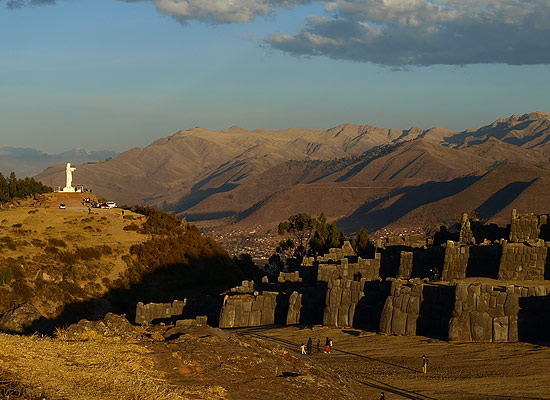
A few surviving gates signal the different areas and layers of the complex. Garcilaso de la Vega gives the sole account of the names of these gates: Tio Punco , Acahuana Puncu , and Huiracocha Puncu . Most of these gates are now gone – like Sacsayhuaman’s other structures, they were dismantled in the period after the conquest. The smaller Puma Puncu (or Gate of the Puma) is one of the few remaining examples of these gates.
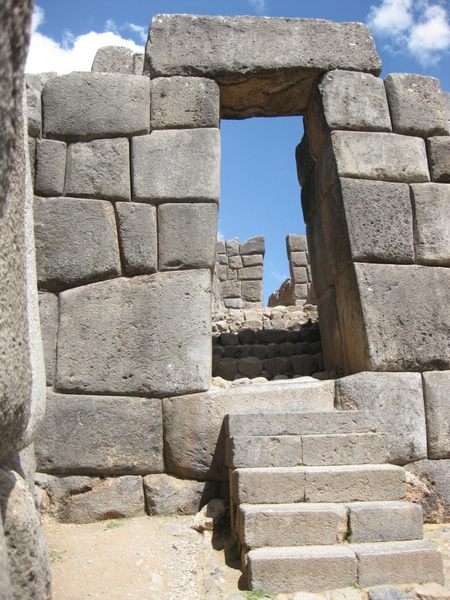
Many travelers visit Cusco and Sacsayhuaman in June in order to witness the many celebrations, such as Inti Raymi (June 24), that unfold around this time. However, the “fortress” is worth a visit at any time of year as it is, after Machu Picchu and Ollantaytambo , the most imposing example of Inca architecture and urbanism. The defensive baluartes are a wonder of ancient archeology and military architecture. The hydrology of the site and a system of water tunnels known as chincanas continue to amaze specialists with its design. All of this is located just a few minutes from the main square of Cusco.
How to get there
Sacsayhuaman sits at an altitude of 3,700 meters (12,140 feet) above sea level on a hill overlooking Cusco City. It covers an area of about 12 square miles. The location is ideal for the original purpose of the complex, which was to survey and protect the city from external attacks, while its large esplanade also served as a place for rituals and political functions. Today, it is the principal stage for Cusco’s Inti Raymi festival in June.
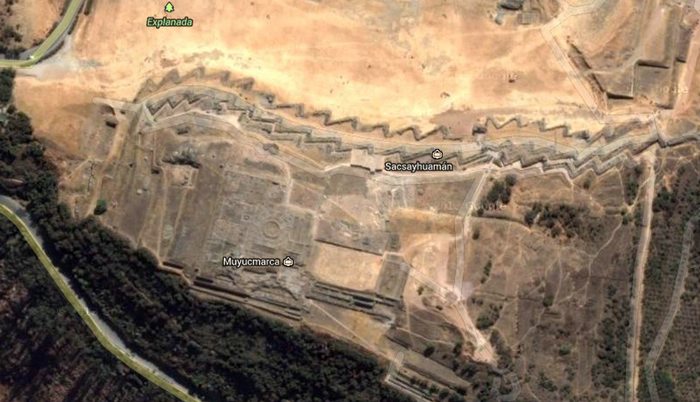
By car : The faster and easier route is to take a car or taxi. From the Plaza de Armas, a standard taxi fare is approximately S./10 (US$2-3), and the ride takes no more than ten minutes.
Walking : If you don’t mind a heart-thumping climb up steep, cobbled lanes, walking to Sacsayhuaman is an option. The most popular route is to take Cordoba Street up to the Nazarenas Square, and then Nazarenas and Pumacurco streets all the way to the ruins. This is a 30-45 minute walk depending on pace. The views of Cusco along the way are exceptional.
Plan your own adventure to Machu Picchu . Trip itineraries and different travel preferences are important variables to consider when figuring our the trip. Let our team of experts at Peru for Less help you! Talk to a travel advisor today.
LEARN MORE about this region of Peru. Checkout our complete Cusco Travel Guide online! It’s free and filled with helpful, up-to-date information.
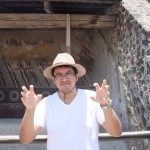
Former guide with Peru for Less and now professor of Latin American and Latino/a Studies at a college in the United States, Javier contributes his endless knowledge of Peru’s past and present.
Tags: Inca ruins near Cusco , Peru , Sacsayhuaman
Related posts:
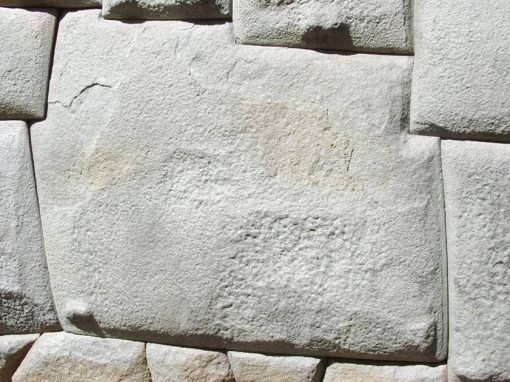
The Twelve Angle Stone of Hatunrumiyoc
Learn more about the Twelve Angle Stone and how to visit this quintessential example of Inca masonry on display in Cusco – plus a special video of the site.
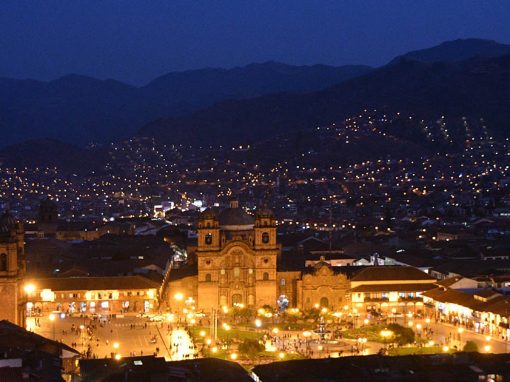
20 Best Things to Do in Cusco (Chosen by Experts!)
Wondering what to do in Cusco? Check out our list featuring 20 of the best things to do in Cusco to discover the best Cusco activities and attractions on your trip.

Start Planning!
Explore all our best-selling packages
See All Packages
Book With Confidence
We're flexible! Postpone your tour with zero cost up to 10 days prior to departure.
The following preferences are optional , but will help enhance your trip's customization.
Are you interested in visiting the best restaurants in Latin America?
Book with confidence
We're flexible! Postpone your tour with zero cost up to 10 days prior to arrival with open dates
( Optional. You may choose more than one)
TIP: Tell us the destinations you have in mind.
- Tour Packages
- Machu Picchu
- Amazon Rainforest
- Galapagos Islands
- Sacred Valley
- Lake Titicaca
- 5000+ Reviews
- Travel Guides
- Work With Us
- Responsible Travel
Rely on our expert services to customize a unique experience. Comfortable hotels, tours, and all transportation. 24/7 in-trip support.
Our Peru For Less Travel Blog is a living library of travel information, knowledge, and advice from a group of travel loving experts who live, work, eat, and breathe all things in South America.
"Our tours are Fully Customizable and leave 365 days a year!"
- Destinations
1-817-230-4971
Sales & travel support
- Travel guides
- Luxury Hotels
- Munich guides

Sacsayhuamán – the amazing Inca ruins in Cusco, Peru
Everything you need to know about doing a sacsayhuamán tour, what to expect and how to get there..
Cusco was once the capital of the Incas. And the crown jewel of the Inca empire was a monolithic fortress above the city: Sacsayhuamán. A fortress of such epic proportions even the conquistadors were more than impressed. If you want to visit the amazing ruins, this is your guide.
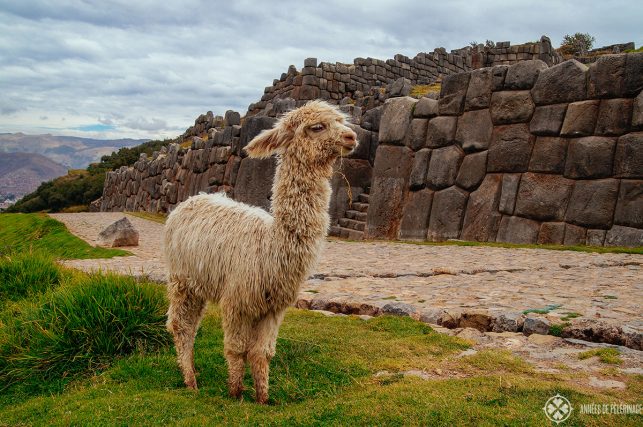
When was Sacsayhuamán built?
Sacsayhuamán was built in the second half of 15th century by the Inca Pachacutec Yupanqui and Tupac Yupanqui. It took some 70 years to finish. Archeologists found an earlier Killke culture site underneath Sacsayhuamán that was dated back to the 11th century.
The Inca fortress once guarded the most important access point into the city – just one of many reasons the UNESCO declared it a World Heritage site in 1983. Sadly, the Spaniards used most of the building blocks to build the cathedrals and palazzos in the city below. Still, Sacsayhuamán is a true must-visit in Cusco (read my guide to read the 20 other best things do in the city ).
Note: I earn a small commission for purchased made through the links in this article
Starting your Sacsayhuamán tour
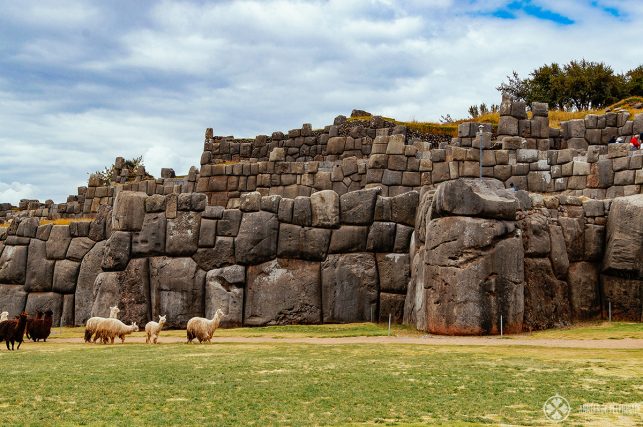
12,142 ft above sea level, that’s how high you’ll need to climb to see Sacsayhuamán, the fortress where the hawk is satiated . Mind you, a taxi will get you there quite easily (see more below), but your breathing might be a bit more belabored than usual ( don’t forget to read my guide about altitude sickness ).
Sacsayhuamán can be divided into three distinct parts, the central ceremonial plaza, the fortress itself, and terraced field on the other side.
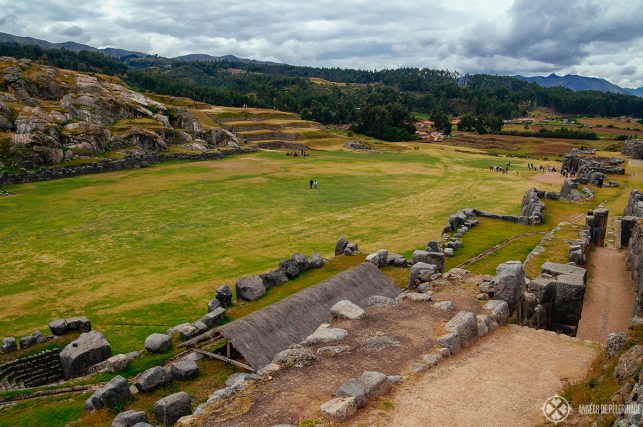
The plaza is gigantic – probably around 600 times 400 meter. To give you a good impression: That’s five times bigger than a football field, can you believe it? It’s truly massive, and standing on the immaculate lawn in front of the fortress truly makes you feel small.
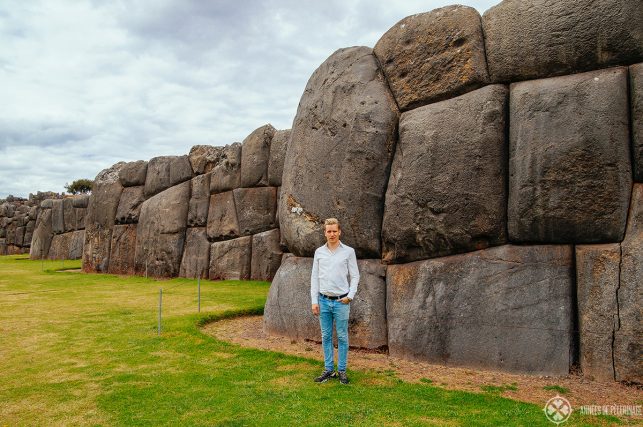
The fortress itself is quite a sight to behold. The zig-zag-wall around the basement is some 400 meters long and constructed using massive monoliths . One stone is over 9 meters high, 5 meters wide and 4 thick, at an estimated weight of 200 tons.
It’s truly beyond imagination, how these huge stones were moved and then fitted so perfectly. I also visited Ollantaytambo, the last fortress of the Incas ( read my guide ), but nothing prepared me for the sheer size of it!
The foundation of the fortress consists of three consecutive tiers. Each one of them getting a bit smaller.
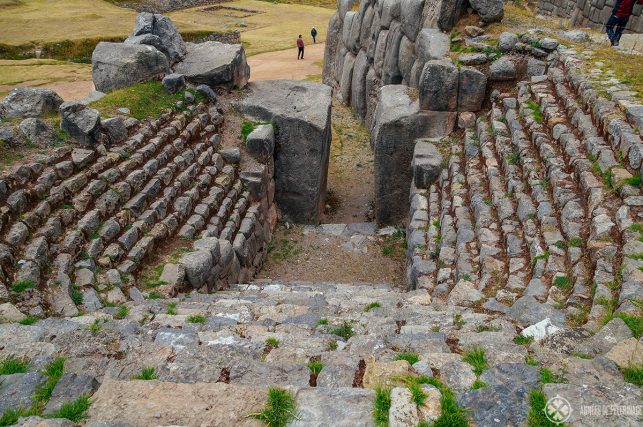
Entrance into the fortress must have once been heavily guarded and just allowed people to enter single file through the ingenious gates . A very narrow cleft in the wall was guarded by a very small portal and behind it a steep landing site that allowed defenders to shoot any intruder from above.
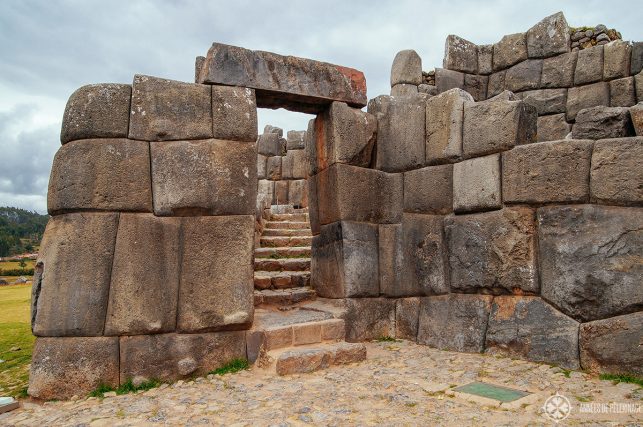
On the ground floor, there are three such gates into the fortress, which are called Ajawanapunku, T’iopunku, and Wiracochapunku.
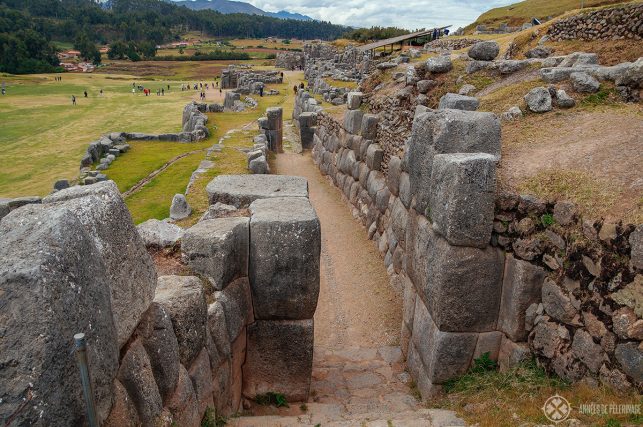
Each of the three rings of Sacsayhuamán was protected in a similar way – which made the fortress nearly impregnable . But those who read their histories probably know, that Francisco Pizzaro succeeded in his conquest of the Inca empire nevertheless.
Still, his brother, Pedro Pizzaro, once described quite detailed what was found within the fortress: Weapons, weapons, and more weapons. According to him, it was one big armory .
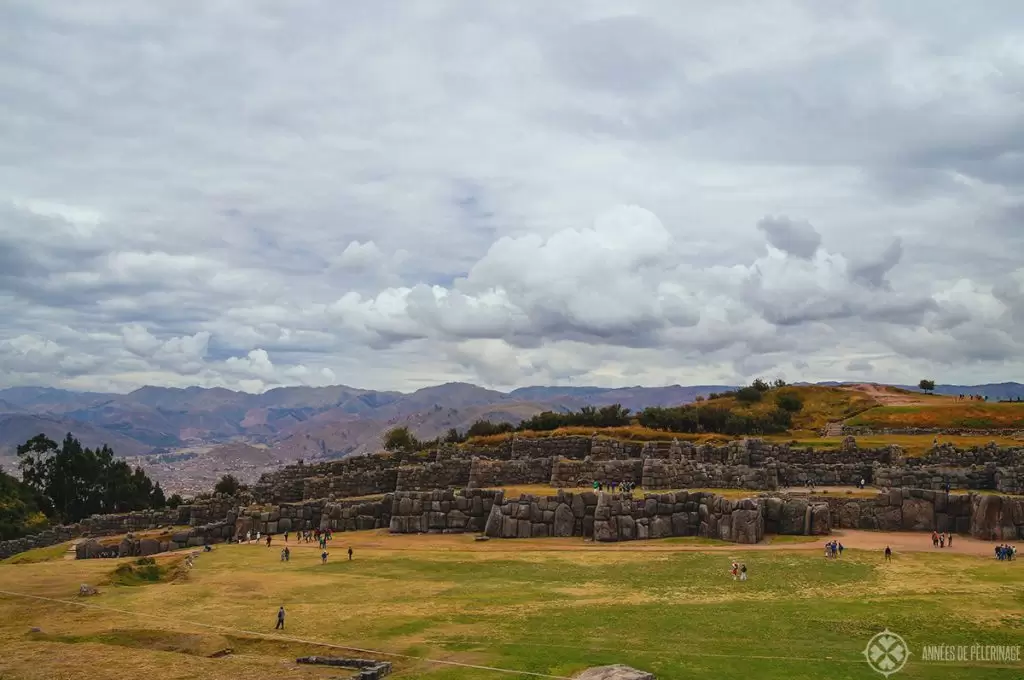
Once you clear the tired walls of Sacsayhuamán you will sadly see little of that former defensive glory. The Spaniards destroyed it all. Out of spite, but mainly because the perfect andesite (a volcanic material almost like basalt) stones of the Inca masons were prime building material for the planned cathedrals and mansions below .
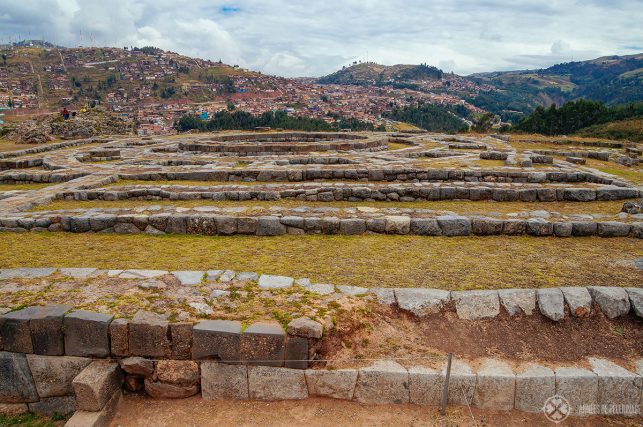
On the far left of the Inca fortress, you cannot help but notice the foundations of a circular tower. This site is called Muyuq Marka and probably was a temple of the sun.
Three concentric circular stone walls, connected by radial walls, still remain. The tower once had 4 floors and must have reached a height of about 20 meters. Quite a remarkable site, especially as the Incas usually favored square buildings (you should definitely do a day trip to Pisac to get a glimpse of what an intact temple district must have looked like; here’s my guide ).
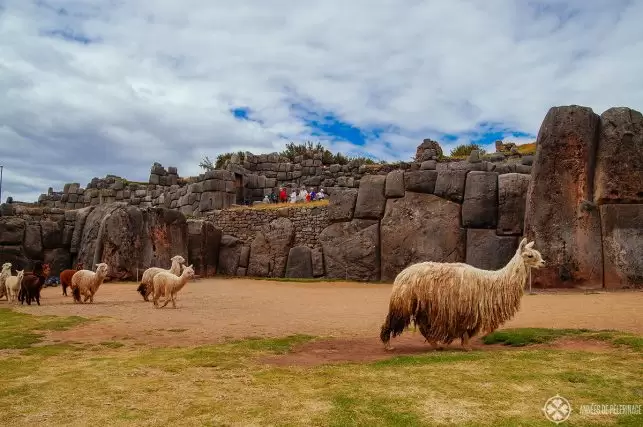
There were two more towers, Pauka Marka and Sallaq Marka right next to Muyuc Marka – interconnected by underground tunnels . Again, you’ll be able to see nothing else but the remains of the foundations.
Not far away, you’ll find the so-called throne of the Inca ( K’usilluc Jink’ian), which is a structure of tired benches hewn into the natural rock with a stunning precession. There is no archeological evidence the Inca used it as a throne, but the perfection of the masonry implies an important function.
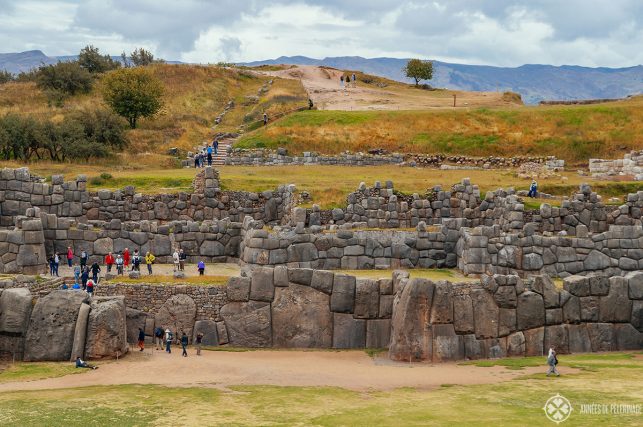
All in all, you’ll need quite some imagination to see Sacsayhuamán the way it once must have stood vigil above Cusco. This is why it might be a good idea to book a guided tour ( here’s an excellent tour with an English guide through Cusco and Sacsayhuaman ).
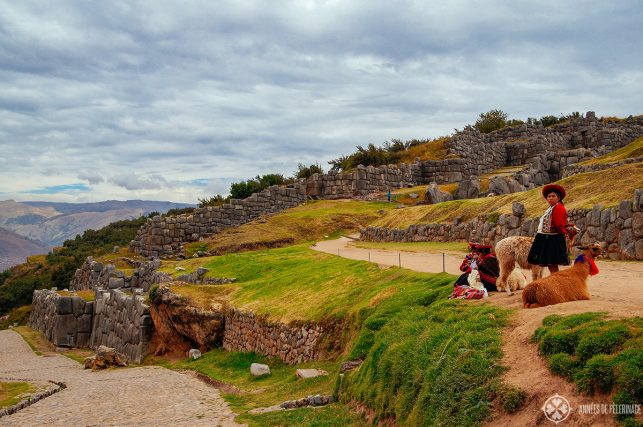
Once a year, to celebrate the winter solstice , Sacsayhuamán transforms into one big festival ground. The festival is held to honor the sun god Inti and dates back to the time of the Incas.
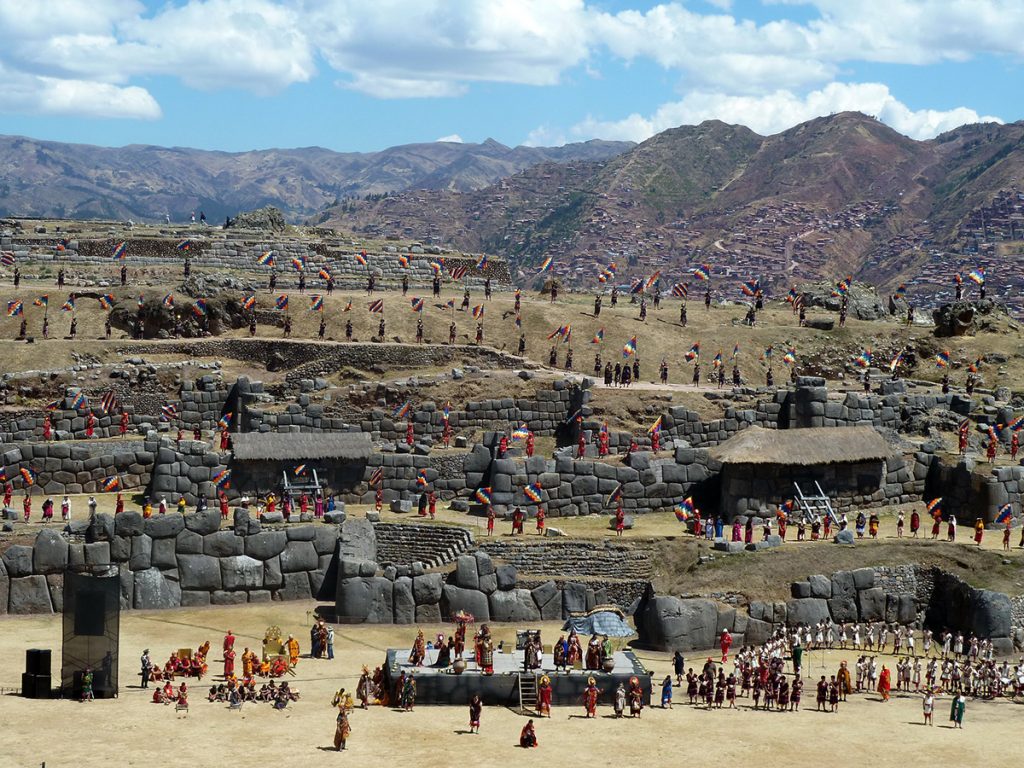
What you see today is a historical reconstruction based on the records of Garcilaso de la Vega, the most important chronicler of that time. Each year, on June 24th , thousands upon thousands of locals gather to celebrate. Naturally, it’s a tourist’s favorite as well, so you might want to plan your Peru itinerary accordingly.
Note: The original Inti Raymi was held on the main square in Cusco, the Huacaypata (what is now the Plaza de Armas).

How to get to Sacsayhuamán from Cusco old town
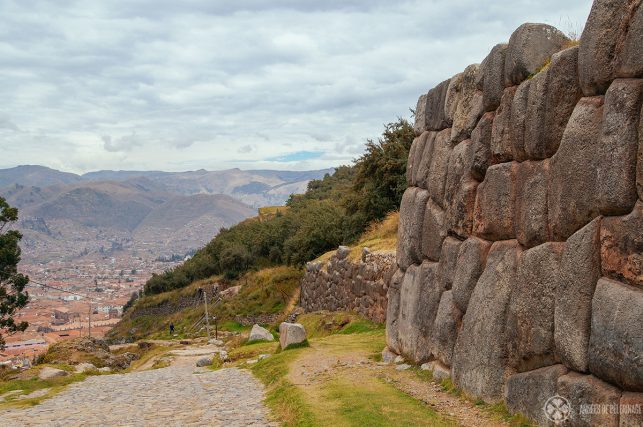
You got two basic ways to get to Sacsayhuamán – on foot or taking a taxi/bus. If you are reasonably fit and already accustomed to the high altitude, then I urge you to walk all the way to the top .
It takes about 40 minutes to reach the top, but you will be walking through the vibrant Bario San Blas where you absolutely need to stop by at the church of the selfsame name. There are many little artisan shops and cool restaurants, so it’s really worth it. The views across Cusco are also quite memorable.
That being said, the cobblestoned streets are quite steep, so the hike is weirdly taxing and you might stop to catch your breath ever so often. You will need some sturdy walking shoes (and make sure to read my Peru packing list )
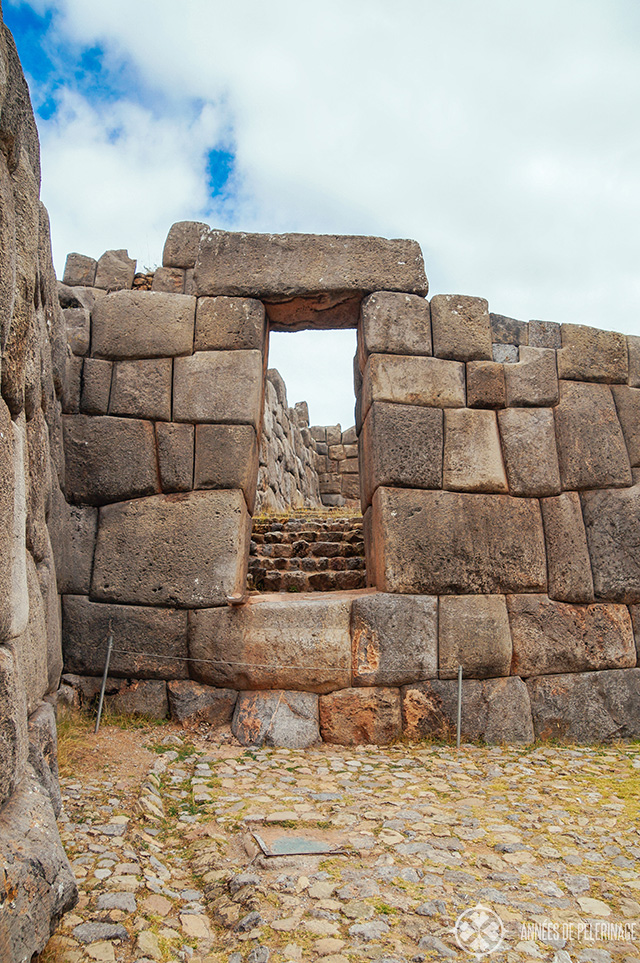
In this case, google maps will show you the way. Basically, you’ll just have to follow the road uphills from the Museo de Arte Precolmbino (Pumacurco) and stay straight.
If you rather want to get to the Inca ruins fast and easy, grab a taxi all the way to the top. It won’t cost more than a couple of dollars (around 10 soles / 3 US-Dollar). Some taxi drivers will offer you to drive you to Q’enko, Puka Pukara, and Tambomachay ruins as well. As they will have to wait for you, while you tour the ruins, they’ll charge more (around 50 soles / 16 US-Dollar).
Just in case you missed it: Here is my guide to the 10 best Inca ruins in Peru
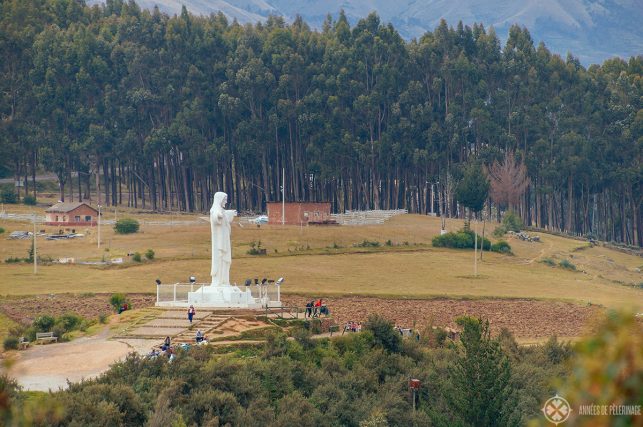
You should also visit the Cristo Blanco , an 26 feet tall statue of Christ the Redeemer above Cusco, which is only about 500 meters away from the entrance of Sacsayhuamán.
Sacsayhuamán entrance fee
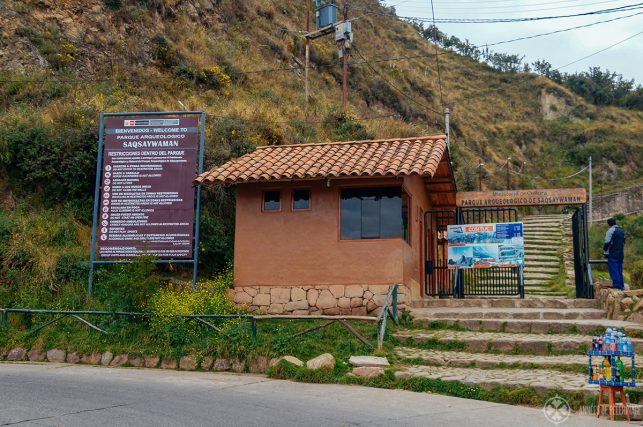
You cannot buy a single entry ticket for Sacsayhuamán . You have to buy a Boleto Turistico ( here’s the official website ) for at least 70. Though it pays off to the one for 130 soles (~ 40 US-Dollar), as it covers other ruins and museums in the area you will be visiting anyway.
The good news, this ticket is valid for 10 days and will cover a couple of other lovely ruins in the area. Tipon, Ollantaytambo, Pisac, and the other ruins in the vicinity. So, it’s totally worth the rather high costs. You can buy it online here .
Note: This tourist ticket does not cover Machu Picchu (but pretty much everything else)
Further reads:
- 20 amazing places to visit in Peru
- Tipon – the water gardens of the Incas
- Machu Picchu – facts & everything you need to know
- The perfect Peru itinerary
- The best day trips from Cusco
So, this was my Sacsayhuamán travel guide and how to visit the amazing Inca ruins in Cusco. Got any questions? Use the comment field below!
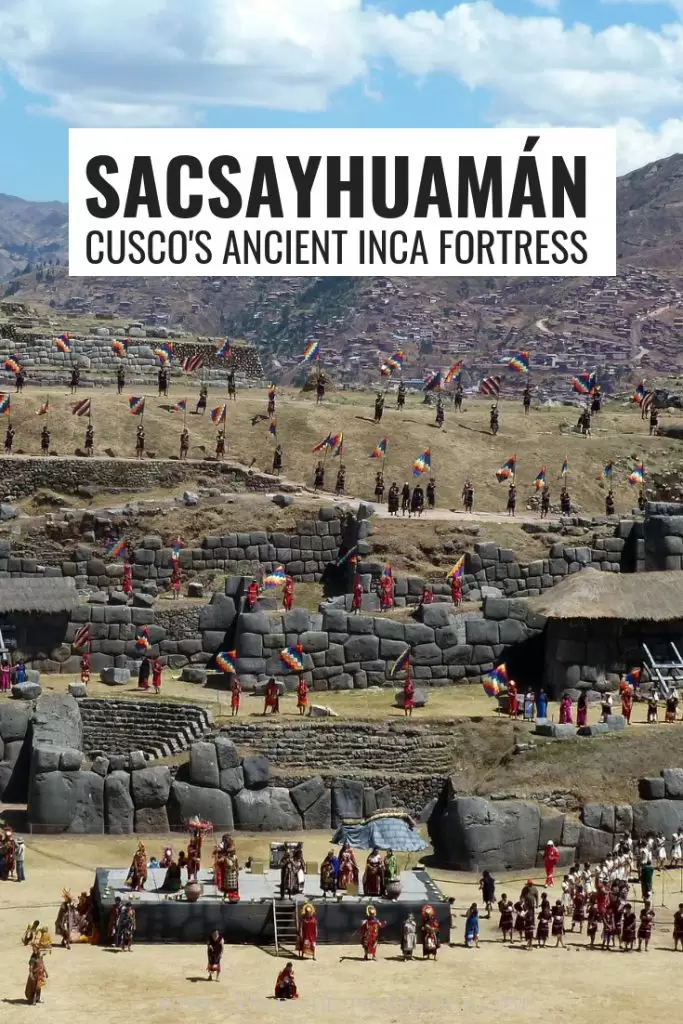
Picture credits: pululante
RELATED ARTICLES MORE FROM AUTHOR
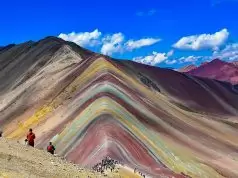
The 10 best day trips from Cusco, Peru
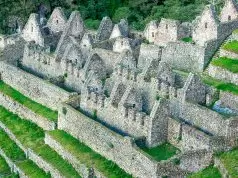
The 10 best Inca ruins in Peru
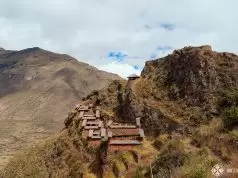
A Day trip to Pisac, Peru | Visiting the ruins & market
Leave a reply cancel reply.
That's okay for me
Save my name, email, and website in this browser for the next time I comment.

The latest post on my travel blog

The best things to do in Madeira, Portugal
- Terms & Conditions
- Site notice
- Data Privacy Statement
- Destinations
- Southern Highlands
Sacsayhuaman, Peru
Perched on the hillside north of Cusco, the immense fortress ruins of Sacsayhuamán are some of the most impressive ruins in the area, holding both religious and military significance. When visitors hike up to the site, they will likely see a herd of alpaca, the domesticated South American camelid, roaming among the ruins.
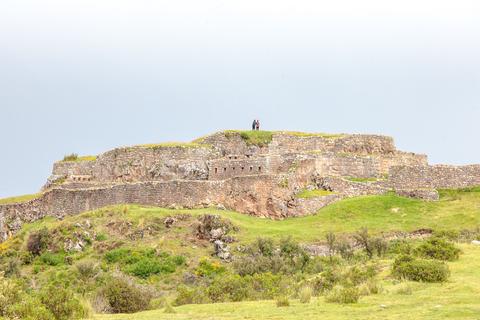
Emperor Pachacuti (or Pachacútec) began building the hillside citadel in the 1440s, but the massive complex wasn't completed until nearly 100 years later. Today only a fraction of the original structure still stands, the rest having been torn down by the Spaniards to build houses in Cusco. What does remain, however, is remarkable.
The most impressive feature might be the massive 66-foot-tall (20-m) outer walls, which are still intact and zigzagging together like razor-sharp teeth, having withstood battles, earthquakes, and time. Even though the largest of the stones weigh over 300 tons, they are fitted perfectly, in the Inca style reserved for important structures. It is believed that in ancient times, this area was probably used for ceremonial gatherings. Today, visitors may be lucky enough to catch one of the many sun ceremonies still held throughout the year.
In 1536, the fort was the site of one of the bitterest battles of the Spanish conquest, sparked by Manco Inca’s rebellion. The Incan resistance leader’s army managed to seize Sacsayhuamán from the Spanish, one of the only victories of the native people against the conquistadors. The triumph was short-lived, however, and 50 Spanish cavalry led by Juan Pizarro, Francisco’s brother, succeeded in recapturing Sacsayhuamán and essentially ending the rebellion.
While Manco Inca survived and escaped to the fortress of Ollantaytambo, most of his forces leapt to their death from the high towers to avoid being killed by the Spanish. The next morning, condors feasted on the pile of corpses, an image captured forever on Cusco's coat-of-arms.
In Quechua the name Sacsayhuamán means “satisfied falcon,” though it’s often referred to mnemonically – “sexy woman” – by travelers.
Sacsayhuaman Things to Do
The most seamless way to plan

Ticket Machu Picchu
Machupicchu terra information and tourist assistance.
Entrance tickets to Machu Picchu book now!
The fortress of Sacsayhuaman
- Share on Facebook
- Share on Twitter
- Share on Google+
- Share by email
Sacsayhuamán is one of the most amazing buildings in the world . One thinks that it began to be constructed during the government of Inca Pachacutec in century XV. It is believed that more than 20 thousand men extracted the stones from the nearby quarries and moved it 20 kilometers to the hill of the city of Cusco. Today, it is estimated that Sacsayhuaman retains only 40 percent of its old structure . Even so, the site has structures of up to 125 tons of weight. How the Incas built Sacsayhuaman with structures of an unlikely weight and size for the time? Many questions are still a mystery. There lies the beauty of this archaeological site.
Where is Sacsayhuaman?
What does sacsayhuaman mean, how to get to sacsayhuaman, architecture of sacsayhuaman, what to see in sacsayhuaman, group of enclosures.
- The Walls (The Presidia)
- Suchuna (Rodaderos)
The throne of the Inca
- Chincanas (tunnels)
How much does it cost to visit Sacsayhuaman?
- Sacsayhuaman – Photo gallery
Information about Sacsayhuaman: weather, hours and more
Questions and answers about sacsayhuaman.
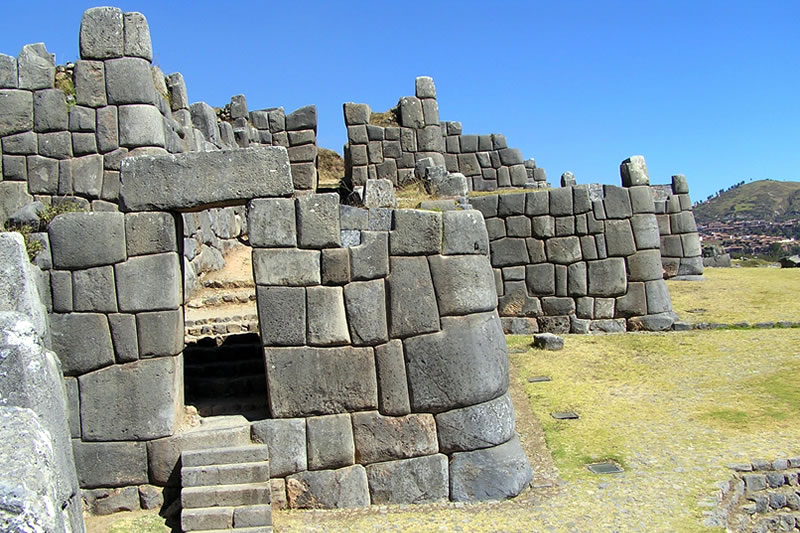
Some studies claim that Sacsayhuaman may have been built by pre-Inca culture.
The archaeological site of Sacsayhuaman is located 2 kilometers north of the Main Square of the Cusco . It is located at 3,700 meters above sea level (msnm).
It extends over an area of more than 3 thousand hectares, on a hill surrounded by mountains. The place has beautiful landscapes with abundant flora and fauna (the llamas and the falcons stand out). :
The term Sacsayhuaman means in Quechua “place where the hawk is satiated” . The name is surely due to the presence of these birds. It is presumed that it was a fortress, although it is also believed that it could be a ceremonial center.
Due to its structure with a military aspect, the Spaniards, on their arrival in the 16th century, would have named it a ‘fortress’. When the Spanish attack was repulsed there during the Inca rebellion in Vilcabamba, the place served as an Inca fortress .
Sacsayhuaman is located just 10 minutes from the Main Square of Cusco (by car) or 45 minutes walking. Another option is to take a ‘City Tour’, which includes transportation to this archaeological site. The entrance is with the Tourist Ticket of Cusco.
The architecture in Sacsayhuaman has sacred buildings such as residential buildings, towers, shrines, warehouses, roads and aqueducts. That is why, the shape and harmony of the landscape is similar to other sacred Inca places such as Machu Picchu.
The main wall of Sacsayhuaman is built in zigzag with giant stones up to 5 meters high and 2.5 meters wide (between 90 and 125 tons of weight).
The south side is bounded by a polished wall approximately 400 meters long. The east and west are limited by other walls and platforms.
According to the Peruvian chronicler Inca Garcilaso de la Vega, Sacsayhuaman was the greatest architectural work that the Incas built during its apogee .
Sacsayhuaman offers an amazing view of Cusco. You can see the summits of Ausangate, Pachatusán and Cinca. These summits were considered sacred to the Incas . The archaeological complex itself has very amazing places, some of them with history and meaning.
The towers are located on the walls in zigzag. They are called Muyucmarca, Paucamarca and Sallaqmarca . It is known that in this place there was abundant water. Even now we can see the aqueducts.
- Muyucmarca Also known as ‘La torre de Cahuide’. It is a huge building (today there is only the base) with an important historical value. It is known that the Inca general Titu Cusi Huallpa (also called Cahuide) jumped from the highest part to avoid being taken prisoner by the Spanish during the Incan resistance of 1536.
- Paucamarca The remains of this tower are located east of the archaeological site. According to the chroniclers, they served to store water. It is currently covered in dirt and is likely to have a square shape.
- Sallaqmarca The remains of this tower are located in the center of Sacsayhuaman. It interconnected with the other towers by tunnels. At present, only the foundations of the towers remain, since they were destroyed by the Spaniards during the colony.
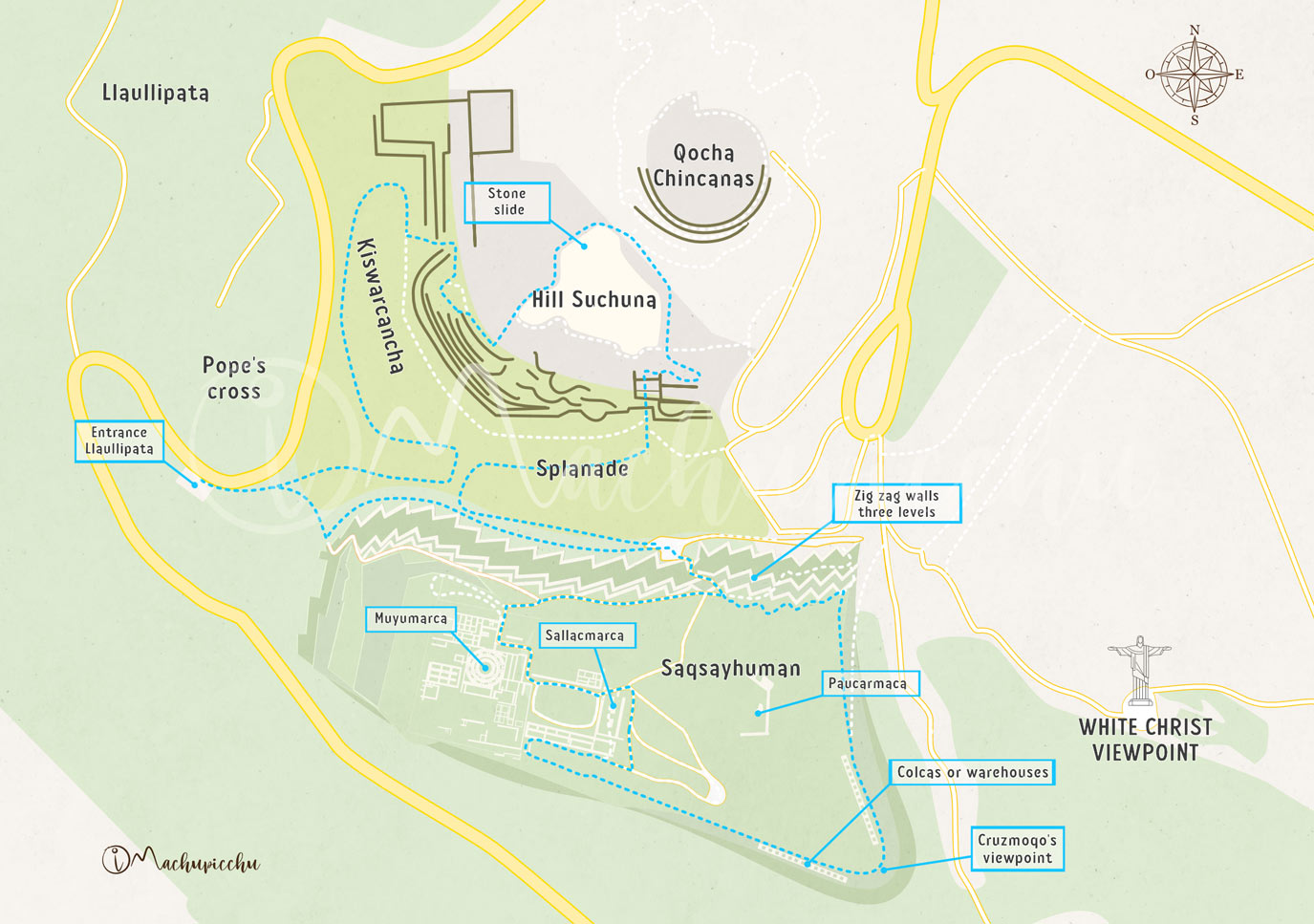
They are rooms supported on the hill a short distance from the turrets. They are directed towards the Main Square of the city of Cusco. They are interconnected by trapezoidal doors .
This area is formed by serrated platforms (zigzag) whose huge limestone walls fit perfectly together.
Historians claim that the first Spaniards who saw these walls attributed their construction to demons. Even today, its elaboration remains a mystery.
The first floor of the bastions presents the larger walls. The largest one weighs up to 128 tons . Due to this and many formidable constructions, Sacsayhuaman has earned the title of one of the most mysterious places on the planet.
They are in the middle and central part of the bastions. They have a trapezoidal shape and served as an entrance to the turret area . Each door has its own name: Ajawanapunku, T’iopunku and Wiracochapunku.
The rodaderos are a natural formation of diorite of volcanic origin. As the years went by, it was moulded in an arched shape like a slide.
The throne of the Inca or K’usilluc Jink’ian (Where the monkey stands) is a stone structure in the form of a seat or bench. They were polished symmetrically with such perfection that the dimension of ‘Throne’ was gained.
Chincanas (Tunnels)
The ‘chincanas’ are tunnels or underground caves in Sacsayhuaman . There are two, the smallest measuring around 15 meters and has become a distraction for travelers. The large one is located north of the complex.
According to oral tradition, many people tried to find the end of the largest tunnel without success. Even some did not manage to leave. It is believed that this tunnel leads to the Coricancha (Temple of the Sun) . Currently, the entrance to this chincana is closed.
To visit Sacsayhuaman you need the Cusco Tourist Ticket. This ticket costs 70 soles. In addition to Sacsayhuaman, it allows entry to Qenqo, Pucapucara and Tambomachay. There is no exclusive ticket to visit Sacsayhuaman.
Another option is to contract the service of a ‘City Tour Cusco’. This service lasts half a day (5 hours). Includes a visit to the Cathedral, Sacsayhuaman, Qenqo, Pucapucara, Tambomachay and Pucapucara. The price may change according to the tourism agency you choose. In general, it ranges from 30 to 60 dollars in all-inclusive service.
Sacsayhuamán - Photo gallery
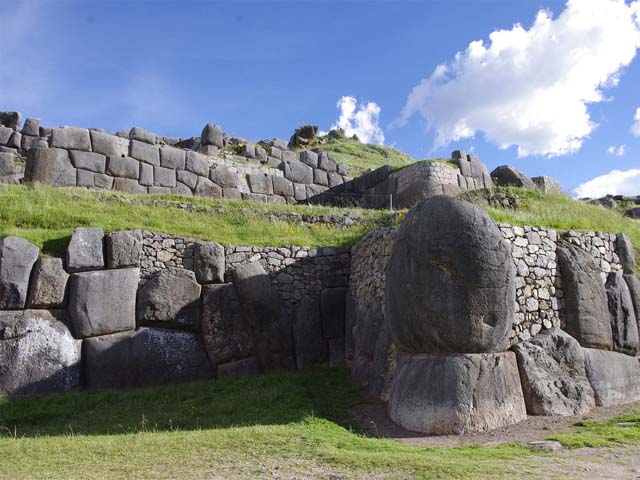
- Climate Sacsayhuaman has a dry and temperate climate. The average temperature per year is 12°C. There are 2 seasons during the year. The rainy season (from November to March) presents a greater amount of fluvial precipitation. The dry season (April to October) has hotter days and colder days at night.
- Sacsayhuaman opens its doors from 7 am to 6 pm
- Sacsayhuaman height is approximately 3,700 meters above sea level.
- Sacsayhuaman dimension is immense. It covers an area of 3,093 hectares.
- Construction It was remodeled in the fifteenth century by order of Emperor Pachacutec. Its origins are uncertain.
1) Is Sacsayhuaman open all year?
2) is there a ticket just to visit sacsayhuaman, 3) can i get tour guides in sacsayhuaman, 4) what is the most famous construction of sacsayhuaman, 5) what does sacsayhuaman represent, 6) what can you do in sacsayhuaman, 7) what did the incas do in sacsayhuaman, 8) can i walk to sacsayhuaman from cusco, 9) what is the best time to visit sacsayhuaman, 10) are there tours to sacsayhuaman.
By Ticket Machu Picchu – Last updated, February 11, 2022
Everything you need to visit Machu Picchu is here!
Your ticket to Machu Picchu
Your transport to the train station, your train ticket to machu picchu, your bus ticket to machu picchu, your official tourist guide, tour to machu picchu all included.

- Experiences
- Destinations
- The Company
- Photo Gallery
- Sacsayhuaman

Undoubtedly, Cusco is home to the most impressive archeological sites in Peru , where the Inca civilization stands out for their impressive engineering knowledge and Sacsayhuaman certainly is one of the perfect examples. The ceremonial fortress is as intriguing as astonishing, its huge stone walls make it look as a shelter for giants, driving our imagination to the craziest mythological stories. However, you’d be impressed to know that the Sacsayhuaman ruins were entirely built by the Incas, making it an unmissable attraction of the Cusco region. Likewise, the architecture, perfect carving, and engineering work will leave you breathless. According to famous historians, the archeological site had a great importance for the Inca culture. Nonetheless, its purpose is still unknown though many theories have come to the surface thanks to studies that now help us understand more about this ancient structure. Just like the mysterious Nazca lines , Cusco also has riddles yet to be solved, and Sacsayhuaman doesn’t stand too far from these enigmas. Even the craziest stories have captivated its visitors, and here we’ll uncover each one of them.
History of Sacsayhuaman
Sacsayhuaman was built between the XV and XVI centuries, Pachacutec started it and Huayna Capac finished it. Apparently, it took over 50 years and 20,000 men to complete this massive structure. Unfortunately, due to the Spanish conquest, the information of this Inca site is limited. However, thanks to historians and archeologists that dedicated their work to the understanding of these Inca remains, now we can assume a few things about the place. Sacsayhuaman was built as a ceremonial center, it consists of several temples dedicated to the cult of the water, the sun, the moon, and other deities of the Inca culture. However, this was not its only purpose since weapons and food storages were found within its structures, confirming that this site was also used as a military center. Some archeologists point out that the Inca Empire used these facilities to train warriors but this was never confirmed. Sacsayhuaman served as a great control center due to its strategic position and high elevation. It also played an important role during the colonization process by protecting the city of Cusco from the Spanish invaders. Nowadays, the Sacsayhuaman Archeological Site is the stage for the famous Inti Raymi celebration during the winter solstice. A ceremony that honors the Sun God since Inca times. The recognized festival gathers hundreds of local and foreign tourists looking to experience the ancient tradition left behind by this civilization.
Architecture
The structure of this archeological site has the distinctive style of Inca engineering, but clearly on a larger scale. Currently, only 40% of Sacsayhuaman remains untouched since when the Spaniards finally gained control over the so-called Imperial City, they dismantled the complex and took a great part of the rocks to build the Colonial Cusco. Although only the foundations of some structures and huge heavy rocks have remained, the magnificence of the site couldn’t be overshadowed. Sacsayhuaman is a great monument with rocks that weigh over 120 tons , each stone carefully carved and polished. All of them were dragged to the location from a nearby quarry by hundreds of men using ropes. The most impressive part of this Inca fortress is how they manage to perfectly fit the rocks one on top of the other without using any type of mortar. The largest stone reaches 5 meters of elevation and it’s 2,5 meters wide. Sacsayhuaman was suitably constructed to resemble the head of a cougar, an important figure of the Andean Cosmovision. Likewise, this represented the Inca ideology of wanting to conquer their lands from above. The structure was thoughtfully designed to merge itself with its surroundings, portraying the authentic landscaping knowledge of this ancient civilization. The archeological complex covers an extension of 3,000 ha. and it is divided into several sections: the remaining foundations of three important towers, the throne of the Inca, bastions, temples, and more.
Sacsayhuaman Theories
Since there’s no actual information about the site, except from the deductions made by the archeologists that studied this structure, different theories have emerged. Some of them are quite accurate, whilst others go to a more imaginative path.
1. Extraterrestrial Beings. This is definitely one of the theories that have captured everyone’s attention. Some people have theorized that the Incas were helped by aliens who gave them the tools to assemble this extraordinary megalithic structure. 2. Others say that the rocks were cut and moved but later fused due to the heat of an intense forest fire. Investigators have tried this with several tests but the results ruled out this probability. 3. Another theory points to the use of lenses and mirrors to fuse the stones together. But, it is known that the Incas didn’t possess this type of technology, which makes it very unlikely.
However, the most accurate theory says that the famous culture engineered a system called “Scribing” or “Template Making,” which consisted of measuring the spaces between the stones, creating a wooden template of the shape to achieve a perfect fit.
As much as we’d love to believe in life in outer space and the possible cosmic contact between the Incas and advanced extraterrestrial civilizations, this last theory seems to resolve a 600-year enigma, though it hasn’t been entirely confirmed.
How to Get There?
Sacsayhuaman is located only 2 kilometers away from Cusco at 3,700 meters above sea level . It is easily accessible by walk or car since it is near Plaza de Armas. However, if you wish to visit this historical monument, we highly recommend taking a guided tour. The famous Ceremonial Fortress comprehends many mysteries and details that you certainly can’t miss. For that reason, if you go on your own, you won’t be able to fully appreciate the history of the place. Luckily for you, we have a special Archeological City Tour , where you’ll get to visit all these attractions and more! Our guided tour starts with a short walk through the historic center, later we board a shuttle that will take us to the famous Sacsayhuaman Fortress, following Q’enqo, Puka Pukara, and Tambomachay.
General Information:
- Operating Hours: Monday to Sunday from 07:00h to 18:00h. - Entrance: The Touristic Ticket is needed to enter the archeological site, it includes all the sights within the Cusco City Tour. (Already included in all our packages).
Dare to uncover the mysteries of the ancient Inca civilization with Viagens Machu Picchu and explore Cusco like a real expert! There are so many things to do in Cusco city that you definitely can't miss, we'd love to show you everything it has to offer so you can make the most of your experience while you're here!
- Puca Pucara
- Tambomachay
- Huchuy Qosqo
- Rainbow Mountains of Peru
- Lagoons & Snow-Capped Mountains
- Historic Center of Cusco
- Inca Palaces
- San Blas Neighborhood
- Museum of Pre-Columbian Art
- Inca Museum
- Machu Picchu Museum: Casa Concha
- Casa Garcilaso
- Other Museums in Cusco
- Archeological City Tour
- Sacred Valley Tour
- Ruta del Sol
- South Valley Tour
- Maras & Moray Tour
- Rainbow Mountain Trek
- Quad Bike Tour
- Lake Humantay Trek
- Free Walking Tour
- 7 Lakes of Ausangate Trek
- Adventures in Cusco
- Mystical and Esoteric
- Art & Culture
- Adventure over 3200 meters
- Restaurants
- Cusco Travel Advice
- When to Visit Cusco
- How to Get to Cusco
- Where to Stay in Cusco
- What to Do in Cusco
- Where to Eat in Cusco
- How to Get Around Cusco
- Best Spots to Do Shopping in Cusco

You want to know more? Access our blog and learn more about this destination.
Package suggestions
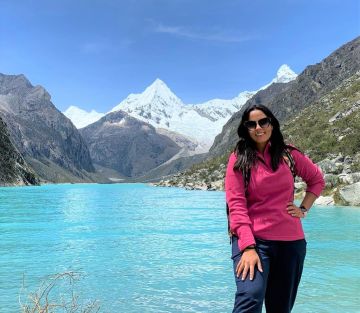
Adventure in the Peruvian Andes
You want to know more? Access our blog and learn more about this destination

What is Sacsayhuaman Cusco? How to walk from Cusco to Saqsaywaman?
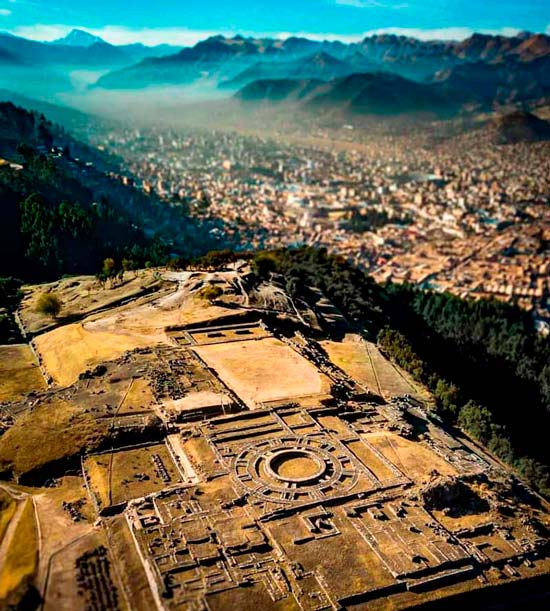
2. How was Sacsayhuaman built? — Architecture
3.1 description:, 3.2 what to see in sacsayhuaman, 3.3 how to visit sacsayhuaman, 3.4 location:, 3.5 at what times can you visit, 3.6 tickets and price for sacsayhuaman, 4. sacsayhuaman for free — without tourist ticket, 5.1 book free sacsayhuaman tour, 5.2 by foot, 5.3 in taxi, 5. in public bus or collectivo, 6. documentary, 7. nearby places:.
Sacsayhuaman Cusco | The Spanish Chroniclers, Mestizos e Indigenous as well as archaeologists and historians from nowadays agreed that the construction of this fortress happened during the reign of Inca Pachacutec emperor in the XV century, the project demanded the work of thousands of specialized people in the masonry, it is calculated that at least 20 thousand people were required to work per day for about 40 years.
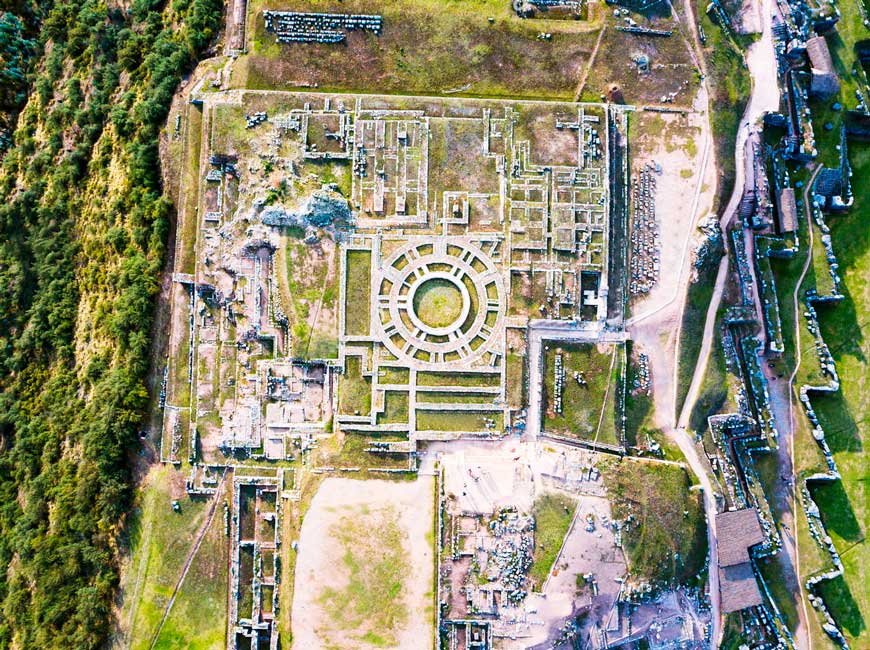
For the building, the architects used about 5000 stones and many of them are so large that they measure up to 4 meters in height and 125 tons in weight. The type of stone used is limestone.
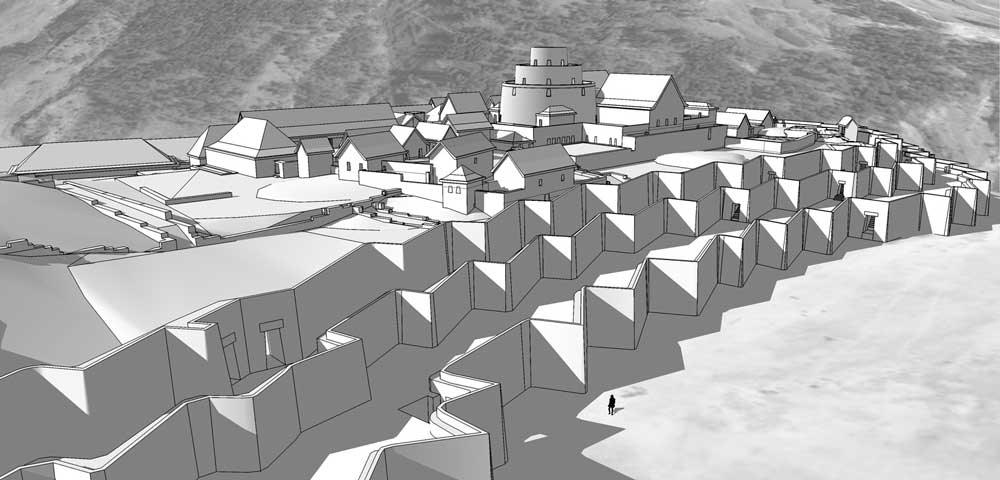
The Quarry for Saqsayhuaman was located about 2 kilometres northwest of this fortress. In this place the stones were broken into movable sizes (NO Cuttting, To split up and To cut don´t have the same connotation) with bronzes, expansion by fire, contraction by water and friction by percussion which were caused by using bronze hammers.
Transportation: They used llama and alpaca fiber, stone and wood rollers, ramps and thousands of people; considers that in Saqsayhuman there is a lot of space, which facilitates the transportation of cyclopean stones. In the Inca period there were three principles of mutual help or reciprocity: Ayni, La Minka and Mita , out from those these three principles, Mita was a tax that most people had to pay in shapes of labour (No money), therefore under this conception there was no shortage of man power, apart from that consider that the population in the Inca period was about 8 million.
The polishing of the edges of the stones facing outside were made by using sand, water and harder stones to generate the abrasion.
3. Facts – Important Information for Travellers
It is a cyclopean construction that had political and religious purpose. Cusco city originally had a city wall, Saqsayhuman Fortress was part of it, appart from that this fortress is located on a higher sea level location (It is located on on top of a mountain in the northwest Cusco city). We also know that on the upper part of the fortress there were 3 watchtowers to keep an eye on any possible atach.
One of those circular tower was about 30 meters high and it was also the eye of the Puma (the city of Cusco had the morphology of the Puma, the head of the Puma was Saqsayhuaman), according to the writings of the Inca Garcilaso de la Vega a half-blood chronicler.
Some historians point out that this fortress was also dedicated to the Lightning God or Illapu (in the Quechua language), for its zigzagging shapes that can be seen on the wall designs.
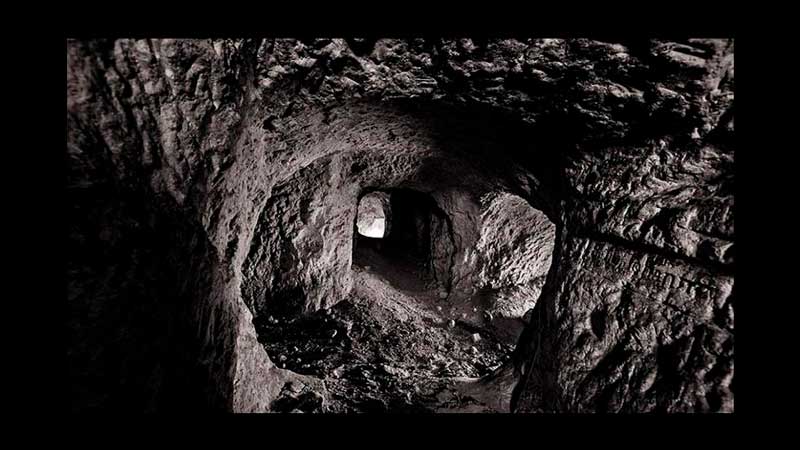
a. The Watchtowers
There were 3 towers known as Muyucmarca (or Cahuide´s tower ), Paucamarca and Sallaqmarca, you can still see nowadays the foundations.
b. The Zigzag walls
The zigzagging shaped walls are very prominent in the first bastion where you can also see the largest stone pieces.
c. The doors
There are three main doors with a trapezoidal shape for a better distribution of the upper weight towards the lower parts. These doors or gates are known as Ajawanapunku, T’iopunku and Wiracochapunku.
d. The Suchuna or The Slide Rock (Rodadero)
The Slide Rock is located at about 7 minutes walk from the ruins of Saqsayhuman , it is scientifically known that a volcano existed millions years ago at this place, which gave rise to this natural diorite Rolling Stone (volcano lava), if you have children you have to visit this place yes or yes. The term Suchuna is Quechua, it means “place where one can roll down or slide”
e. The Inca’s Throne
It is a stone structure sculpted perfectly on a on-site stone. It is very close to the Rolling Stones.
f. The Chincanas or Tunnels
They are underground passageways of natural origin, there are three of them, two of them were sealed off at the beginning of the 21st century, some attempt were made to find the end of both tunnels without success, according to legends it is believed that one of them connects with the Qoricancha temple and the other with Sayhuaman watchtowers, this fact was never proved, so they are premises based on legends only.
The only Chinkana open to the public measures about 15 meters distance, it is located very close to the Suchuna or Rolling Stone.
You can do it on your own or book the City tour of Cusco + Sacsayhuamán .
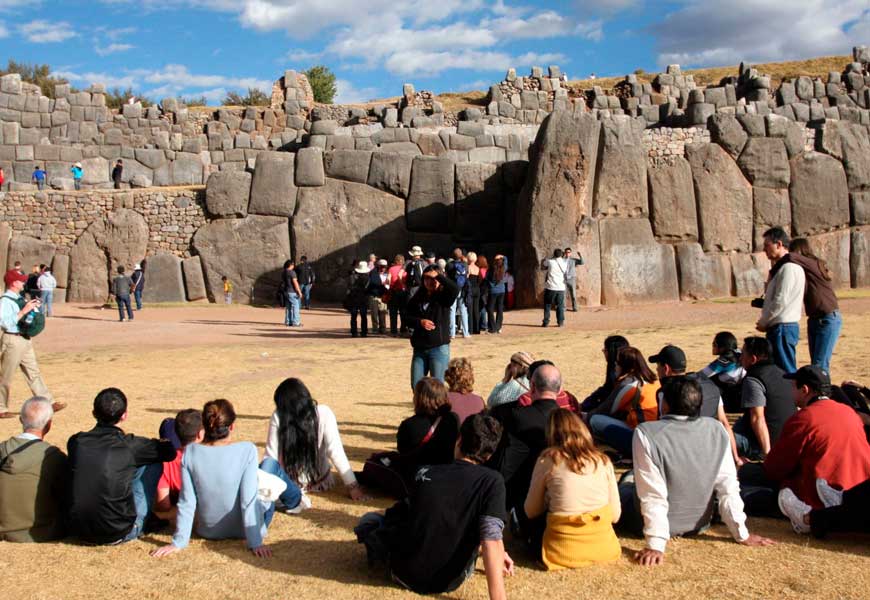
It is located at about 2km away from the historic center of Cusco .
This complex is open from 8am to 5pm, Monday through Sunday.
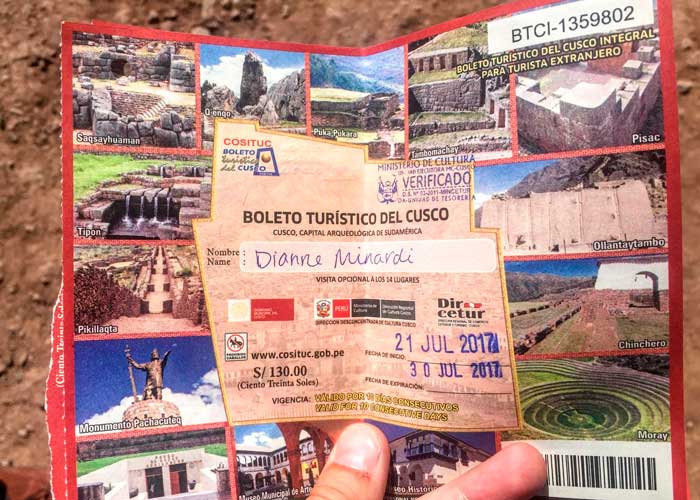
To enter this archaeological complex you must buy the Cusco Tourist Ticket at Avenida el Sol 185 from 8am to 5:30 pm, Monday through Sunday.
Prices may vary according to your nationality, the price is 130 Soles for tourists, 70 Soles for Peruvians, remember that the Cusco Tourist Ticket is a document that will let you access to many attractions in Cusco city and the Cusco region (16 attractions package), some tourists don´t want to pay that amount of money, so they buy only the partial ticket which costs 70 Soles.
You can also buy this ticket at the same attraction, the same day of your excursion, do always bring local currency (Soles, No USD is accepted), consider that if you buy the ticket the same day of your activity, the Partial Tickets may run out sometimes.
In Conclusion to access this place you need to buy the Tourist Ticket, you will not be able to buy an individual Ticket Only for this Place.
There are many tourists who ask about the possibility of visiting this complex without paying the entrance ticket, well as proffessionals don´t recommend doing so becasue it is illegal, nontheless we have seen many tourists “visiting” this site very early in the morning (5am to 6am) without paying the entrance fee, taking advantage of the absence of the park rangers. The park rangers start working from 8am .
The bottom line: It is possible “visiting” this site withoout paying the fee at least very earky in the morning, however it is not legal, we have even seen and heard in the news that those tourists who enter this place without paying this site are removed from this park by the tourism police of Cusco city. We don’t believe this is the experience you would love having in Cusco!
5. How to walk to Sacsayhuaman from Cusco?
Consider that we can always assist you with a tour guide, we have our best english speaking guides ( see our reviews ) ready to help you or just check all details below so that you can make it on your own.
Sign up for our free tour of Sacsayhuamán , visit this architectural jewel with authorized Guides. Check our comments here , follow us on Instagram .
From the historical center to Saqsayhuaman on foot takes 40 minutes, the route is very steep. The first thing you have to do is, Get to the San Cristobal church and there ask the locals for the route to Saqsayhuaman, don’t worry, you won’t get lost. Click here for Google Maps of Saqsayhuaman .
From the historical center of Cusco to Saqsayhuaman by taxi takes 10 minutes, pay an average of 10 Soles, one way. We advise you to take the taxi one way only, on the way back you can do it on foot through the Cristo Blanco and the San Blas neighborhood.
You can also use Uber because that there are many taxi drivers who overcharge.
Get to the Puente Rosario bus stop , in front of the Qarmenqa hotel, at this bus stop take the “Cristo Blanco” Bus (Cristo Blanco in this case means the name of the bus company) and get off at Cristo Blanco bus stop , pay 0.80 cents. From the Cristo Blanco bus stop walk for about 5 minutes to get to Saqsayhuaman.
Check out the best documentary below about the enigmas of this fortress and temple.
- Muyuq Marka
- Rodadero o Suchuna
- Restaurante La Laguna Azul
- Cristo Blanco
- Complejo Arqueológico Q’enco
Free Walking Tours Peru
Secure your spot on our free tours led by professional, authorized, and expert guides in Free tour Cusco , Free tour Lima , and Free tour Arequipa . Booking is free!

Flavor and tradition: 10 Peruvian desserts

Top things to do in requipa

Gastronomy of Arequipa: ¿What to eat?

8 Touristic Neighborhoods and Districts of Lima

Free Short Walks in Cusco

Cielo Punku Viewpoint: A door to the Cusco sky
Related tours.

- Destinations
- Travel Blog
- Reservations
- About Orana Travel
Sacsayhuaman Visit
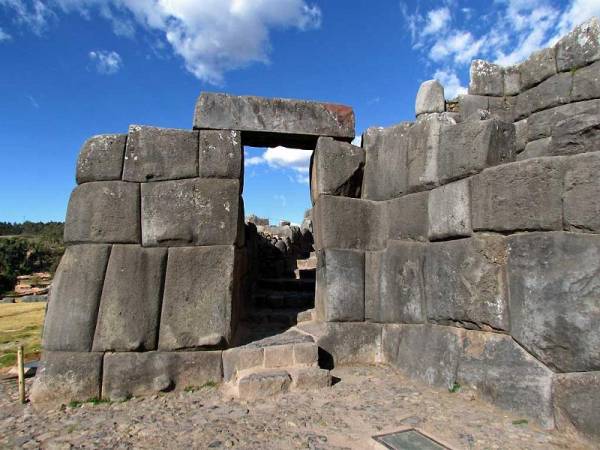
Stone Cross Beam, Sacsayhuaman
Sacsayhuaman Visit – Getting There
After our Tambopata River Adventure was finished, we returned to Cusco for a couple more nights. On the first afternoon, I negotiated in Spanish with a cab to take us on a self-guided Sacsayhuaman visit. It’s called Sexy Woman by tourists. I don’t think I negotiated too well, as we quickly settled on a price that included visiting the other 3 nearby ruins as well. It was late afternoon, so our visits to each site were fairly short, but that suited us just fine. I don’t like waiting for a group and I don’t mind missing out on a little narrative. A cab is less expensive, faster and more enjoyable than a tour bus to me.
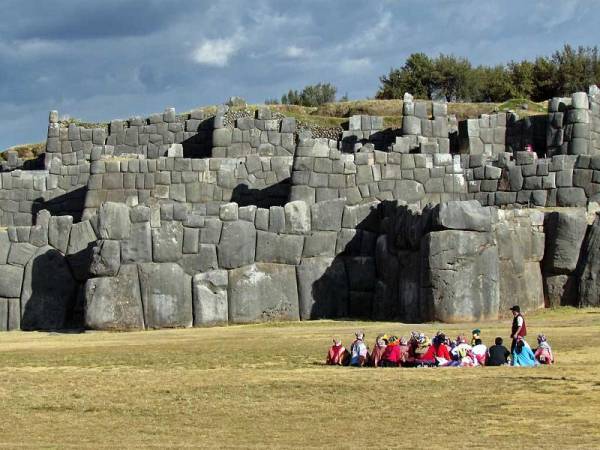
Sacsayhuaman Inca Ruins and Visitor Tour
Sacsayhuaman Visit – Ruins
Sacsayhuamán is an impressive Inca fortress built in the 14th and 15th centuries. The stones are gigantic and they fit together so tightly that you can’t wedge anything into the seams. The early Spaniards tried to destroy Inca stonework, but much of Sacsayhuamán was indestructible. You can wander freely among the stonework ruins. A couple stone cross beams are still in place and you can walk under them. Also, you can look down to the city of Cusco close by below. A short walk from the ruins takes you to Cristo Blanco – the White Christ Statue overlooking the city of Cusco too. Putting a cross on a hillside was a typical practice by early Spaniards. It diverted the natives from their practice of honoring mountains by substituting the cross instead.

Puka Pucara Ruins
Qenqo, Puka Pucara, Tambomachay
After spending about a half hour at Sacsayhuaman, we returned to our waiting cab. We then sped off to see the other ruins on the road ringing the hillside above Cusco. It’s easy to visit these sites as they are all located on the main road. First we stopped at Qenqo. This site looks like a pile of rubble. You wander through the stones and then you enter inside a narrow tunnel pathway inside the mound of rocks. Very cool!
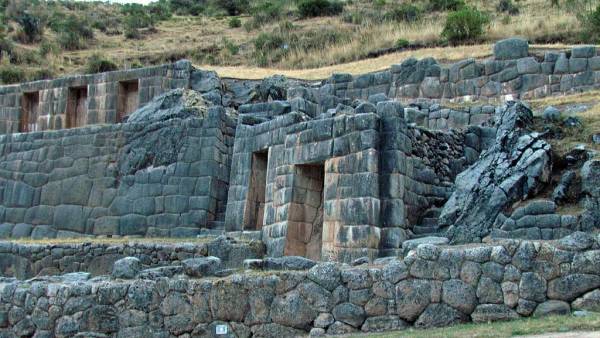
Tambomachay Inca Ruins
Next we stopped at Puka Pucara. The sun lit this small site brightly and we only stayed a couple of minutes. Our last stop was Tambomachay. The sun was setting as we walked a short distance to these ruins. This site is very small. The stones were stained almost blue or purple in the setting sun. Each of these three sites are very different from each other.
Taking a cab from Cusco is an excellent way to visit Sacsayhuman, Qenqo, Puka Pucara and Tambomachay. The next morning we set out on a Maras Moray Day Trip.
Sacsayhauman Slide Show Gallery
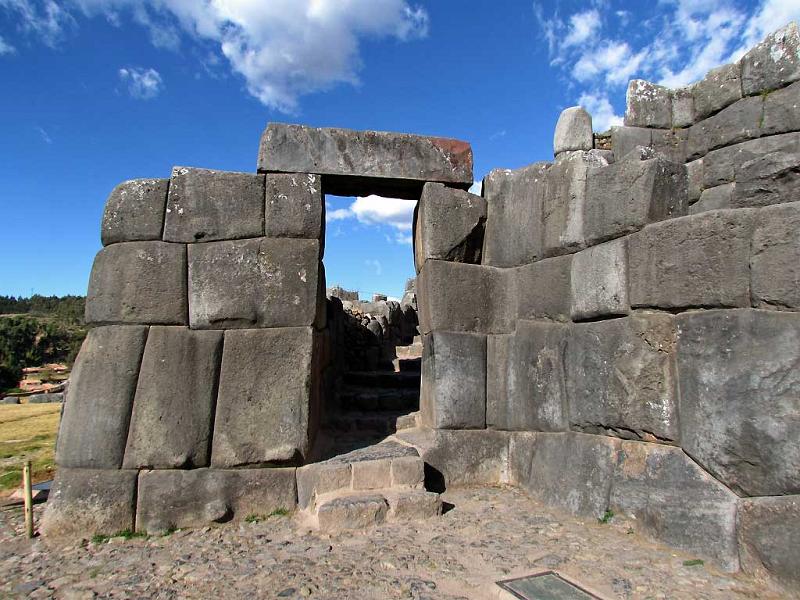
Share This Amazing Location!
Related posts.
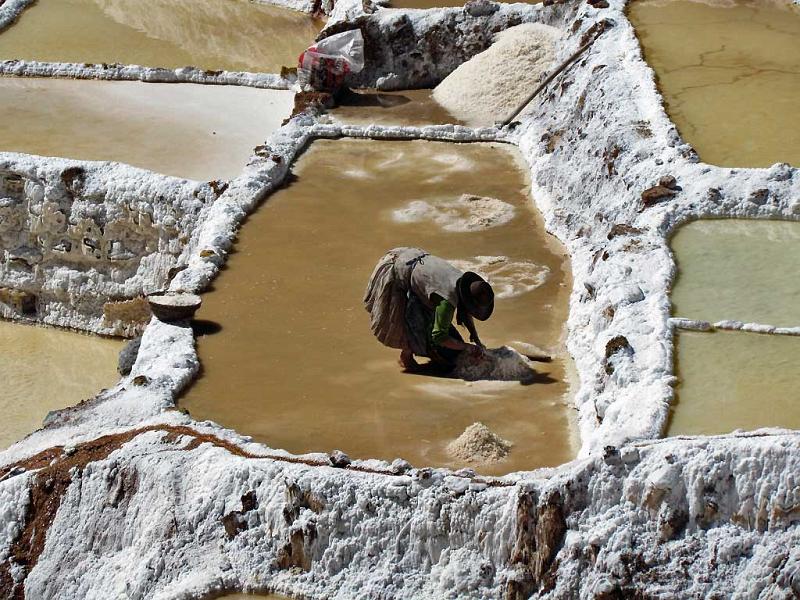
Maras Moray Day Trip
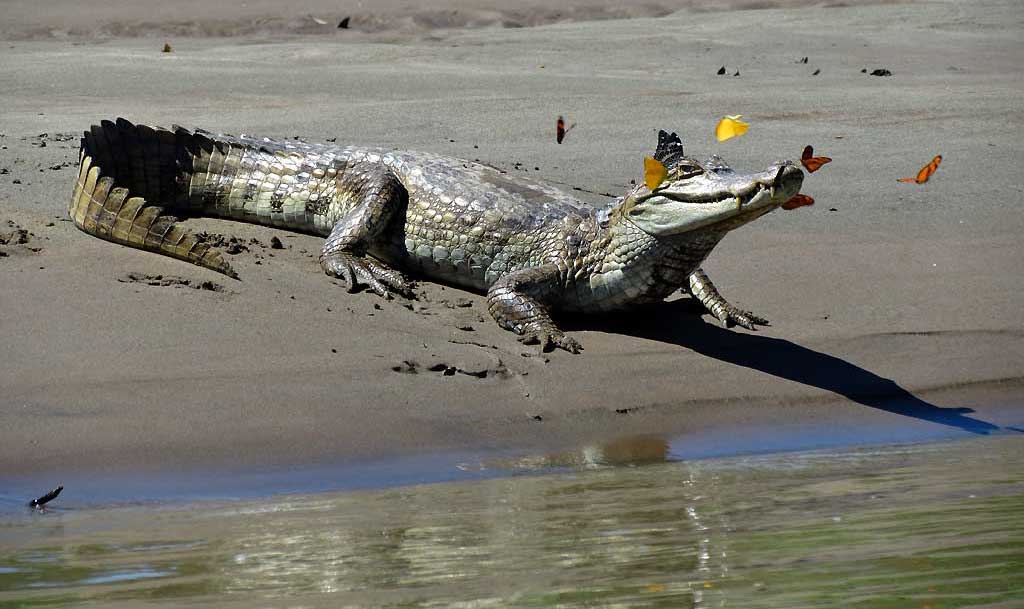
Tambopata River Adventure
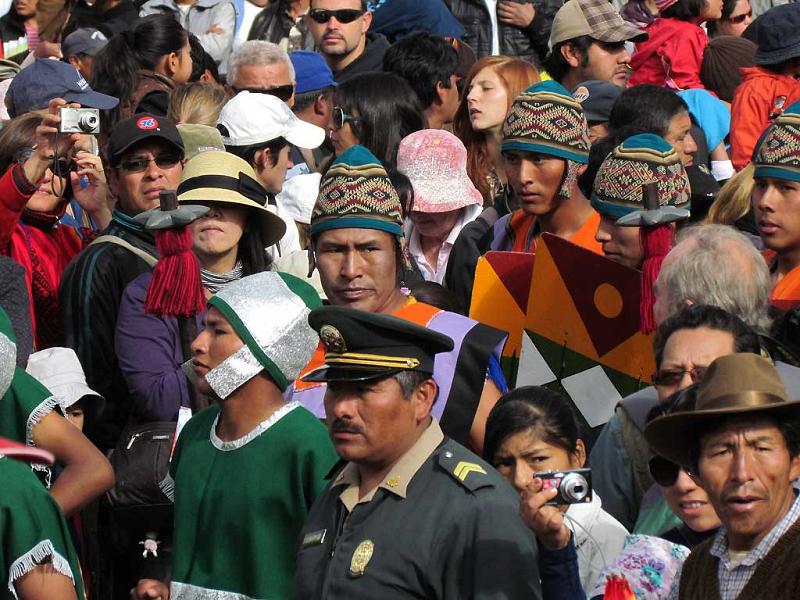
Inti Raymi Festival
Leave a comment cancel reply.
Claudia Looi
Touring the Top 10 Moscow Metro Stations
By Claudia Looi 2 Comments

Komsomolskaya metro station looks like a museum. It has vaulted ceilings and baroque decor.
Hidden underground, in the heart of Moscow, are historical and architectural treasures of Russia. These are Soviet-era creations – the metro stations of Moscow.
Our guide Maria introduced these elaborate metro stations as “the palaces for the people.” Built between 1937 and 1955, each station holds its own history and stories. Stalin had the idea of building beautiful underground spaces that the masses could enjoy. They would look like museums, art centers, concert halls, palaces and churches. Each would have a different theme. None would be alike.
The two-hour private tour was with a former Intourist tour guide named Maria. Maria lived in Moscow all her life and through the communist era of 60s to 90s. She has been a tour guide for more than 30 years. Being in her 60s, she moved rather quickly for her age. We traveled and crammed with Maria and other Muscovites on the metro to visit 10 different metro stations.

Arrow showing the direction of metro line 1 and 2

Moscow subways are very clean
To Maria, every street, metro and building told a story. I couldn’t keep up with her stories. I don’t remember most of what she said because I was just thrilled being in Moscow. Added to that, she spilled out so many Russian words and names, which to one who can’t read Cyrillic, sounded so foreign and could be easily forgotten.
The metro tour was the first part of our all day tour of Moscow with Maria. Here are the stations we visited:
1. Komsomolskaya Metro Station is the most beautiful of them all. Painted yellow and decorated with chandeliers, gold leaves and semi precious stones, the station looks like a stately museum. And possibly decorated like a palace. I saw Komsomolskaya first, before the rest of the stations upon arrival in Moscow by train from St. Petersburg.
2. Revolution Square Metro Station (Ploshchad Revolyutsii) has marble arches and 72 bronze sculptures designed by Alexey Dushkin. The marble arches are flanked by the bronze sculptures. If you look closely you will see passersby touching the bronze dog's nose. Legend has it that good luck comes to those who touch the dog's nose.

Touch the dog's nose for good luck. At the Revolution Square station

Revolution Square Metro Station
3. Arbatskaya Metro Station served as a shelter during the Soviet-era. It is one of the largest and the deepest metro stations in Moscow.

Arbatskaya Metro Station
4. Biblioteka Imeni Lenina Metro Station was built in 1935 and named after the Russian State Library. It is located near the library and has a big mosaic portrait of Lenin and yellow ceramic tiles on the track walls.

Lenin's portrait at the Biblioteka Imeni Lenina Metro Station

5. Kievskaya Metro Station was one of the first to be completed in Moscow. Named after the capital city of Ukraine by Kiev-born, Nikita Khruschev, Stalin's successor.

Kievskaya Metro Station
6. Novoslobodskaya Metro Station was built in 1952. It has 32 stained glass murals with brass borders.

Novoslobodskaya metro station
7. Kurskaya Metro Station was one of the first few to be built in Moscow in 1938. It has ceiling panels and artwork showing Soviet leadership, Soviet lifestyle and political power. It has a dome with patriotic slogans decorated with red stars representing the Soviet's World War II Hall of Fame. Kurskaya Metro Station is a must-visit station in Moscow.

Ceiling panel and artworks at Kurskaya Metro Station

8. Mayakovskaya Metro Station built in 1938. It was named after Russian poet Vladmir Mayakovsky. This is one of the most beautiful metro stations in the world with 34 mosaics painted by Alexander Deyneka.

Mayakovskaya station

One of the over 30 ceiling mosaics in Mayakovskaya metro station
9. Belorusskaya Metro Station is named after the people of Belarus. In the picture below, there are statues of 3 members of the Partisan Resistance in Belarus during World War II. The statues were sculpted by Sergei Orlov, S. Rabinovich and I. Slonim.

10. Teatralnaya Metro Station (Theatre Metro Station) is located near the Bolshoi Theatre.

Teatralnaya Metro Station decorated with porcelain figures .

Taking the metro's escalator at the end of the tour with Maria the tour guide.
Have you visited the Moscow Metro? Leave your comment below.
January 15, 2017 at 8:17 am
An excellent read! Thanks for much for sharing the Russian metro system with us. We're heading to Moscow in April and exploring the metro stations were on our list and after reading your post, I'm even more excited to go visit them. Thanks again 🙂
December 6, 2017 at 10:45 pm
Hi, do you remember which tour company you contacted for this tour?
Leave a Reply Cancel reply
You must be logged in to post a comment.
Please go to the Instagram Feed settings page to create a feed.

Turn Your Curiosity Into Discovery
Latest facts.
13 Facts About Brain Tumor Awareness Month US May
13 Facts About Community Garden Week Apr 1st To Apr 7th
40 facts about elektrostal.
Written by Lanette Mayes
Modified & Updated: 02 Mar 2024
Reviewed by Jessica Corbett

Elektrostal is a vibrant city located in the Moscow Oblast region of Russia. With a rich history, stunning architecture, and a thriving community, Elektrostal is a city that has much to offer. Whether you are a history buff, nature enthusiast, or simply curious about different cultures, Elektrostal is sure to captivate you.
This article will provide you with 40 fascinating facts about Elektrostal, giving you a better understanding of why this city is worth exploring. From its origins as an industrial hub to its modern-day charm, we will delve into the various aspects that make Elektrostal a unique and must-visit destination.
So, join us as we uncover the hidden treasures of Elektrostal and discover what makes this city a true gem in the heart of Russia.
Key Takeaways:
- Elektrostal, known as the “Motor City of Russia,” is a vibrant and growing city with a rich industrial history, offering diverse cultural experiences and a strong commitment to environmental sustainability.
- With its convenient location near Moscow, Elektrostal provides a picturesque landscape, vibrant nightlife, and a range of recreational activities, making it an ideal destination for residents and visitors alike.
Known as the “Motor City of Russia.”
Elektrostal, a city located in the Moscow Oblast region of Russia, earned the nickname “Motor City” due to its significant involvement in the automotive industry.
Home to the Elektrostal Metallurgical Plant.
Elektrostal is renowned for its metallurgical plant, which has been producing high-quality steel and alloys since its establishment in 1916.
Boasts a rich industrial heritage.
Elektrostal has a long history of industrial development, contributing to the growth and progress of the region.
Founded in 1916.
The city of Elektrostal was founded in 1916 as a result of the construction of the Elektrostal Metallurgical Plant.
Located approximately 50 kilometers east of Moscow.
Elektrostal is situated in close proximity to the Russian capital, making it easily accessible for both residents and visitors.
Known for its vibrant cultural scene.
Elektrostal is home to several cultural institutions, including museums, theaters, and art galleries that showcase the city’s rich artistic heritage.
A popular destination for nature lovers.
Surrounded by picturesque landscapes and forests, Elektrostal offers ample opportunities for outdoor activities such as hiking, camping, and birdwatching.
Hosts the annual Elektrostal City Day celebrations.
Every year, Elektrostal organizes festive events and activities to celebrate its founding, bringing together residents and visitors in a spirit of unity and joy.
Has a population of approximately 160,000 people.
Elektrostal is home to a diverse and vibrant community of around 160,000 residents, contributing to its dynamic atmosphere.
Boasts excellent education facilities.
The city is known for its well-established educational institutions, providing quality education to students of all ages.
A center for scientific research and innovation.
Elektrostal serves as an important hub for scientific research, particularly in the fields of metallurgy, materials science, and engineering.
Surrounded by picturesque lakes.
The city is blessed with numerous beautiful lakes, offering scenic views and recreational opportunities for locals and visitors alike.
Well-connected transportation system.
Elektrostal benefits from an efficient transportation network, including highways, railways, and public transportation options, ensuring convenient travel within and beyond the city.
Famous for its traditional Russian cuisine.
Food enthusiasts can indulge in authentic Russian dishes at numerous restaurants and cafes scattered throughout Elektrostal.
Home to notable architectural landmarks.
Elektrostal boasts impressive architecture, including the Church of the Transfiguration of the Lord and the Elektrostal Palace of Culture.
Offers a wide range of recreational facilities.
Residents and visitors can enjoy various recreational activities, such as sports complexes, swimming pools, and fitness centers, enhancing the overall quality of life.
Provides a high standard of healthcare.
Elektrostal is equipped with modern medical facilities, ensuring residents have access to quality healthcare services.
Home to the Elektrostal History Museum.
The Elektrostal History Museum showcases the city’s fascinating past through exhibitions and displays.
A hub for sports enthusiasts.
Elektrostal is passionate about sports, with numerous stadiums, arenas, and sports clubs offering opportunities for athletes and spectators.
Celebrates diverse cultural festivals.
Throughout the year, Elektrostal hosts a variety of cultural festivals, celebrating different ethnicities, traditions, and art forms.
Electric power played a significant role in its early development.
Elektrostal owes its name and initial growth to the establishment of electric power stations and the utilization of electricity in the industrial sector.
Boasts a thriving economy.
The city’s strong industrial base, coupled with its strategic location near Moscow, has contributed to Elektrostal’s prosperous economic status.
Houses the Elektrostal Drama Theater.
The Elektrostal Drama Theater is a cultural centerpiece, attracting theater enthusiasts from far and wide.
Popular destination for winter sports.
Elektrostal’s proximity to ski resorts and winter sport facilities makes it a favorite destination for skiing, snowboarding, and other winter activities.
Promotes environmental sustainability.
Elektrostal prioritizes environmental protection and sustainability, implementing initiatives to reduce pollution and preserve natural resources.
Home to renowned educational institutions.
Elektrostal is known for its prestigious schools and universities, offering a wide range of academic programs to students.
Committed to cultural preservation.
The city values its cultural heritage and takes active steps to preserve and promote traditional customs, crafts, and arts.
Hosts an annual International Film Festival.
The Elektrostal International Film Festival attracts filmmakers and cinema enthusiasts from around the world, showcasing a diverse range of films.
Encourages entrepreneurship and innovation.
Elektrostal supports aspiring entrepreneurs and fosters a culture of innovation, providing opportunities for startups and business development.
Offers a range of housing options.
Elektrostal provides diverse housing options, including apartments, houses, and residential complexes, catering to different lifestyles and budgets.
Home to notable sports teams.
Elektrostal is proud of its sports legacy, with several successful sports teams competing at regional and national levels.
Boasts a vibrant nightlife scene.
Residents and visitors can enjoy a lively nightlife in Elektrostal, with numerous bars, clubs, and entertainment venues.
Promotes cultural exchange and international relations.
Elektrostal actively engages in international partnerships, cultural exchanges, and diplomatic collaborations to foster global connections.
Surrounded by beautiful nature reserves.
Nearby nature reserves, such as the Barybino Forest and Luchinskoye Lake, offer opportunities for nature enthusiasts to explore and appreciate the region’s biodiversity.
Commemorates historical events.
The city pays tribute to significant historical events through memorials, monuments, and exhibitions, ensuring the preservation of collective memory.
Promotes sports and youth development.
Elektrostal invests in sports infrastructure and programs to encourage youth participation, health, and physical fitness.
Hosts annual cultural and artistic festivals.
Throughout the year, Elektrostal celebrates its cultural diversity through festivals dedicated to music, dance, art, and theater.
Provides a picturesque landscape for photography enthusiasts.
The city’s scenic beauty, architectural landmarks, and natural surroundings make it a paradise for photographers.
Connects to Moscow via a direct train line.
The convenient train connection between Elektrostal and Moscow makes commuting between the two cities effortless.
A city with a bright future.
Elektrostal continues to grow and develop, aiming to become a model city in terms of infrastructure, sustainability, and quality of life for its residents.
In conclusion, Elektrostal is a fascinating city with a rich history and a vibrant present. From its origins as a center of steel production to its modern-day status as a hub for education and industry, Elektrostal has plenty to offer both residents and visitors. With its beautiful parks, cultural attractions, and proximity to Moscow, there is no shortage of things to see and do in this dynamic city. Whether you’re interested in exploring its historical landmarks, enjoying outdoor activities, or immersing yourself in the local culture, Elektrostal has something for everyone. So, next time you find yourself in the Moscow region, don’t miss the opportunity to discover the hidden gems of Elektrostal.
Q: What is the population of Elektrostal?
A: As of the latest data, the population of Elektrostal is approximately XXXX.
Q: How far is Elektrostal from Moscow?
A: Elektrostal is located approximately XX kilometers away from Moscow.
Q: Are there any famous landmarks in Elektrostal?
A: Yes, Elektrostal is home to several notable landmarks, including XXXX and XXXX.
Q: What industries are prominent in Elektrostal?
A: Elektrostal is known for its steel production industry and is also a center for engineering and manufacturing.
Q: Are there any universities or educational institutions in Elektrostal?
A: Yes, Elektrostal is home to XXXX University and several other educational institutions.
Q: What are some popular outdoor activities in Elektrostal?
A: Elektrostal offers several outdoor activities, such as hiking, cycling, and picnicking in its beautiful parks.
Q: Is Elektrostal well-connected in terms of transportation?
A: Yes, Elektrostal has good transportation links, including trains and buses, making it easily accessible from nearby cities.
Q: Are there any annual events or festivals in Elektrostal?
A: Yes, Elektrostal hosts various events and festivals throughout the year, including XXXX and XXXX.
Was this page helpful?
Our commitment to delivering trustworthy and engaging content is at the heart of what we do. Each fact on our site is contributed by real users like you, bringing a wealth of diverse insights and information. To ensure the highest standards of accuracy and reliability, our dedicated editors meticulously review each submission. This process guarantees that the facts we share are not only fascinating but also credible. Trust in our commitment to quality and authenticity as you explore and learn with us.
Share this Fact:

Radiators fail once more: Moscow suburbs residents appeal to Putin
R esidents across the Moscow suburbs are besieged by a heating problem, for which they plead direct intervention from President Vladimir Putin. These individuals have yet to experience any semblance of home heating since winter started due to a dwindling supply of heating oil. The issue, one largely avoided by local authority communication, has left residents desperate to the point of directly appealing to the president.
While plots have been uncovered to disrupt Ukraine's infrastructure for a second consecutive winter, thus depriving civilians of heating, it seems Russians are now mired in their crisis. Irony drips from the fact that those under Putin's leadership are looking to cause turmoil in Ukraine, yet at home, they face a similar predicament.
Many dwellings within the Moscow agglomeration are presently without heat. The capital's residents are desperate, directly appealing to President Putin due to a perceived lack of alternate avenues for assistance. The absence of suitable heating functionality since winter commenced pushes them towards desperation with no relief in sight.
This seems improbable, but in Russia, it appears that anything can happen.
It remains uncertain if Vladimir Putin is actively addressing the heating crisis. Some experts suggest that Russia's heating oil reserves are depleting, which negatively affects residents' quality of life. Plagued by cold radiators and plummeting winter temperatures, these citizens have directly addressed their pleas to their head of state.
This heating crisis is happening in Elektrostal, a town approximately 71 miles from Moscow.
Ironically, Russia has constantly aimed to destroy the Ukrainian infrastructure since war broke out, deliberately trying to leave Ukrainians without heating during the harsh winters, aiming to break their strong will. It's an irony they now struggle with a domestic heating crisis, particularly near Moscow, their largest and most pivotal city.
Desperate individuals are reaching out to Vladimir Putin. They question his knowledge of the heating infrastructure conditions in the Moscow suburbs and the dire situations residents face there. Sundown brings no relief from the harsh Russian winter and without heating, their houses turn cold. With elections nearing, more and more residents find themselves reaching out directly to their president.
"Since winter's start, we've been without heating. This has been a yearly occurrence for the past three years. Despite paying for heating, we don't have enough. We implore you, help us!" - these are the desperate pleas from the heavily dressed populace dealing with the Russian winter conditions.
Experts attribute the heating oil shortage to international sanctions and surging demands for diesel fuel, pivotal to military operations. Russia now grapples with a dearth of raw materials essential for boiler and heating plant operation. As supplies dwindle, houses grow cold with little hope of any immediate corrective intervention.
It would be adequate if the war ceased, residents were prioritized, and attention accorded to their welfare.
Russians report Ukrainian drone shot down near Moscow
Putin faces strategic dilemma in prolonged Ukrainian war
Former Ukrainian deputy Kywa assassinated in Moscow amidst war tensions
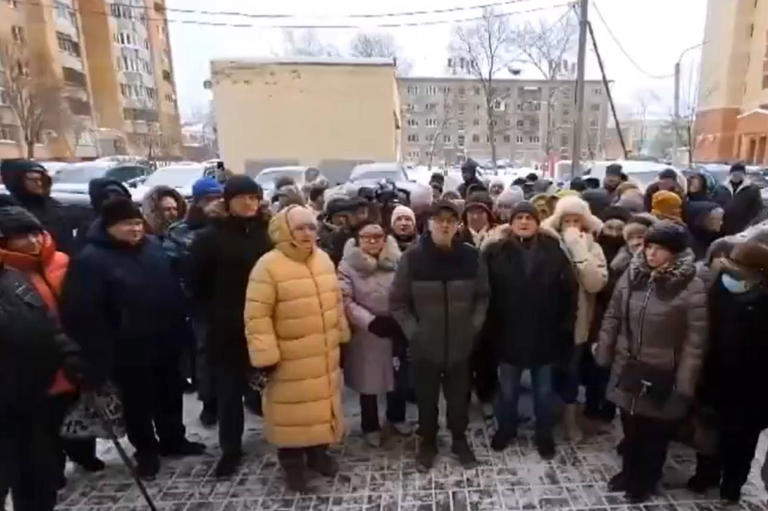

IMAGES
VIDEO
COMMENTS
A visit to the Sacsayhuaman ruins is a must from Cusco and is a perfect short morning or afternoon trip. Sacsayhuaman and its partner ruins of Qenko, Puka Pukara, and Tambomachay are the closest ruins to Cusco and easily accessible by taxi, bus, or even by foot from Plaza de Armas in Cusco's city center.
The Sacsayhuaman is opened from 7 AM to 5:30 PM, Monday to Sunday. The opening hours are similar to other Inca ruins in the valley. The best time to visit the complex is early in the morning or late in the afternoon. If you want to avoid crowds, though, midday is the time to go in.
Sacsayhuaman is the site of ancient Incan ruins located on the edge of the historic city of Cusco at an altitude of 12,142 feet (that's a whopping 3,700 meters above sea level). These days, it's an active archaeological site and one of the top attractions in the Cusco area; but hundreds of years ago, it was a mighty citadel in the Incan Empire.
At the time of this writing, it costs 130 soles to purchase the full tourist ticket to enter Sacsayhuaman. The hours of operation are from 7am to 5:30pm. Be sure to check operating hours prior to planning your own visit. Sacsayhuaman is just one of 23 things we recommend seeing while in Cusco, Peru!
Visit Adventures. Trips Highlight. ... Sacsayhuaman Archaeological Park, located on the outskirts of the city of Cusco, is one of the most imposing and enigmatic archaeological charms in the world ...
Without a doubt, witnessing the fortress of Sacsayhuamán not only makes its visitors know a little more about the Inca Empire, but they also end up dazzled by the great skill of the engineers of the pre-Hispanic era. The gigantic ceremonial fortress of Sacsayhuaman is an Inca structure located 2 kilometres from the city of Cusco.
Sacsayhuaman is a must-visit destination for those seeking to immerse themselves in the wonders of ancient Andean culture. Perched 755 feet above Cusco, Sacsayhuaman is an awe-inspiring archaeological site that is worth visiting. These Inca ruins offer a glimpse into the rich history and architectural prowess of one of the world's greatest ...
Opening Times: The entry times to Sacsayhuaman are Monday-Sunday 7:00 am to 6:00 pm. Prices: Entry included in Tourist Ticket that costs around S/. 70 to S/. 130. You must buy a tourist ticket for most of the attractions in Cusco. Visit Sacsayhuaman Soon. Don't miss out the opportunity to immerse yourself in this ancient world of Sacsayhuaman.
The Best Time to Visit Sacsayhuaman. The best times to visit Sacsayhuaman are in the early morning and late afternoon. Midday tends to be the busiest time with large tour groups. Go early or late to avoid crowds and see the fortress at its most peaceful. Cusco Tourist Ticket to Visit Sacsayhuaman
Many travelers visit Cusco and Sacsayhuaman in June in order to witness the many celebrations, such as Inti Raymi (June 24), that unfold around this time. However, the "fortress" is worth a visit at any time of year as it is, after Machu Picchu and Ollantaytambo , the most imposing example of Inca architecture and urbanism.
The best time to visit Sacsayhuaman. The fortress is located around Cusco. In this form, its climate is cold and dry for most part of the year. Therefore, the complex is subdued by the weather of Imperial City. The dry season from April to November is characterized by heavy rays of sunshine, and clear skies, with temperatures around 18ºC approx.
The Cristo Blanco statue in the vicinity of Sacsayhuaman. You should also visit the Cristo Blanco, an 26 feet tall statue of Christ the Redeemer above Cusco, which is only about 500 meters away from the entrance of Sacsayhuamán. Sacsayhuamán entrance fee The main entrance & ticket office. You cannot buy a single entry ticket for Sacsayhuamán.
Sacsayhuaman, Peru. Perched on the hillside north of Cusco, the immense fortress ruins of Sacsayhuamán are some of the most impressive ruins in the area, holding both religious and military significance. When visitors hike up to the site, they will likely see a herd of alpaca, the domesticated South American camelid, roaming among the ruins ...
To visit Sacsayhuaman you need the Cusco Tourist Ticket. This ticket costs 70 soles. In addition to Sacsayhuaman, it allows entry to Qenqo, Pucapucara and Tambomachay. There is no exclusive ticket to visit Sacsayhuaman. Another option is to contract the service of a 'City Tour Cusco'. This service lasts half a day (5 hours).
Sacsayhuaman is located only 2 kilometers away from Cusco at 3,700 meters above sea level. It is easily accessible by walk or car since it is near Plaza de Armas. However, if you wish to visit this historical monument, we highly recommend taking a guided tour.
5. In Public Bus or Collectivo. Get to the Puente Rosario bus stop, in front of the Qarmenqa hotel, at this bus stop take the "Cristo Blanco" Bus (Cristo Blanco in this case means the name of the bus company) and get off at Cristo Blanco bus stop, pay 0.80 cents. From the Cristo Blanco bus stop walk for about 5 minutes to get to Saqsayhuaman.
Sideways view of the walls of Sacsayhuamán showing the details of the stonework and the angle of the walls. Muyuq Marka Close up of stone wall. Sacsayhuamán, often spelled Sacsahuaman or Saqsaywaman, (from Quechua, Saqsaywaman (pukara) '(fortress) of the royal falcon or hawk'), is a citadel on the northern outskirts of the city of Cusco, Peru, the historic capital of the Inca Empire.
Sacsayhuaman Visit - Ruins. Sacsayhuamán is an impressive Inca fortress built in the 14th and 15th centuries. The stones are gigantic and they fit together so tightly that you can't wedge anything into the seams. The early Spaniards tried to destroy Inca stonework, but much of Sacsayhuamán was indestructible.
Entrance to Sacsayhuaman. Whether you plan the visit on your own or with a tour from a travel agency like Machu Picchu Peru Tours, the entrance to Sacsayhuaman will always be the same, using the Partial Tourist Ticket. We can buy these income at the entrance of the archaeological complexes or at Av. El Sol 103, the cost is 70 soles.
Elektrostal is a city in Moscow Oblast, Russia, located 58 kilometers east of Moscow. Elektrostal has about 158,000 residents. Mapcarta, the open map.
Kurskaya Metro Station is a must-visit station in Moscow. Ceiling panel and artworks at Kurskaya Metro Station. 8. Mayakovskaya Metro Station built in 1938. It was named after Russian poet Vladmir Mayakovsky. This is one of the most beautiful metro stations in the world with 34 mosaics painted by Alexander Deyneka.
40 Facts About Elektrostal. Elektrostal is a vibrant city located in the Moscow Oblast region of Russia. With a rich history, stunning architecture, and a thriving community, Elektrostal is a city that has much to offer. Whether you are a history buff, nature enthusiast, or simply curious about different cultures, Elektrostal is sure to ...
Former Ukrainian deputy Kywa assassinated in Moscow amidst war tensions. Residents across the Moscow suburbs are besieged by a heating problem, for which they plead direct intervention from ...